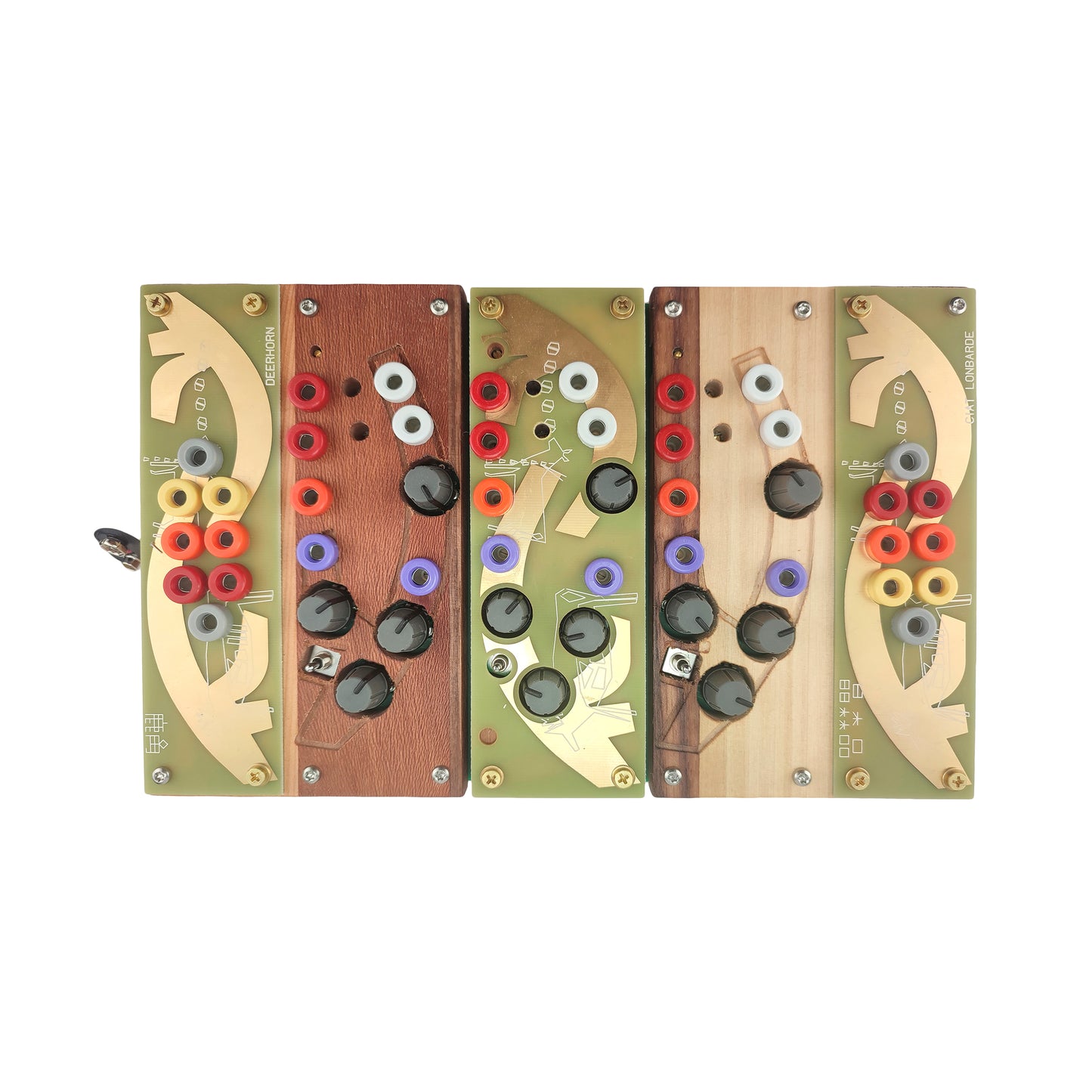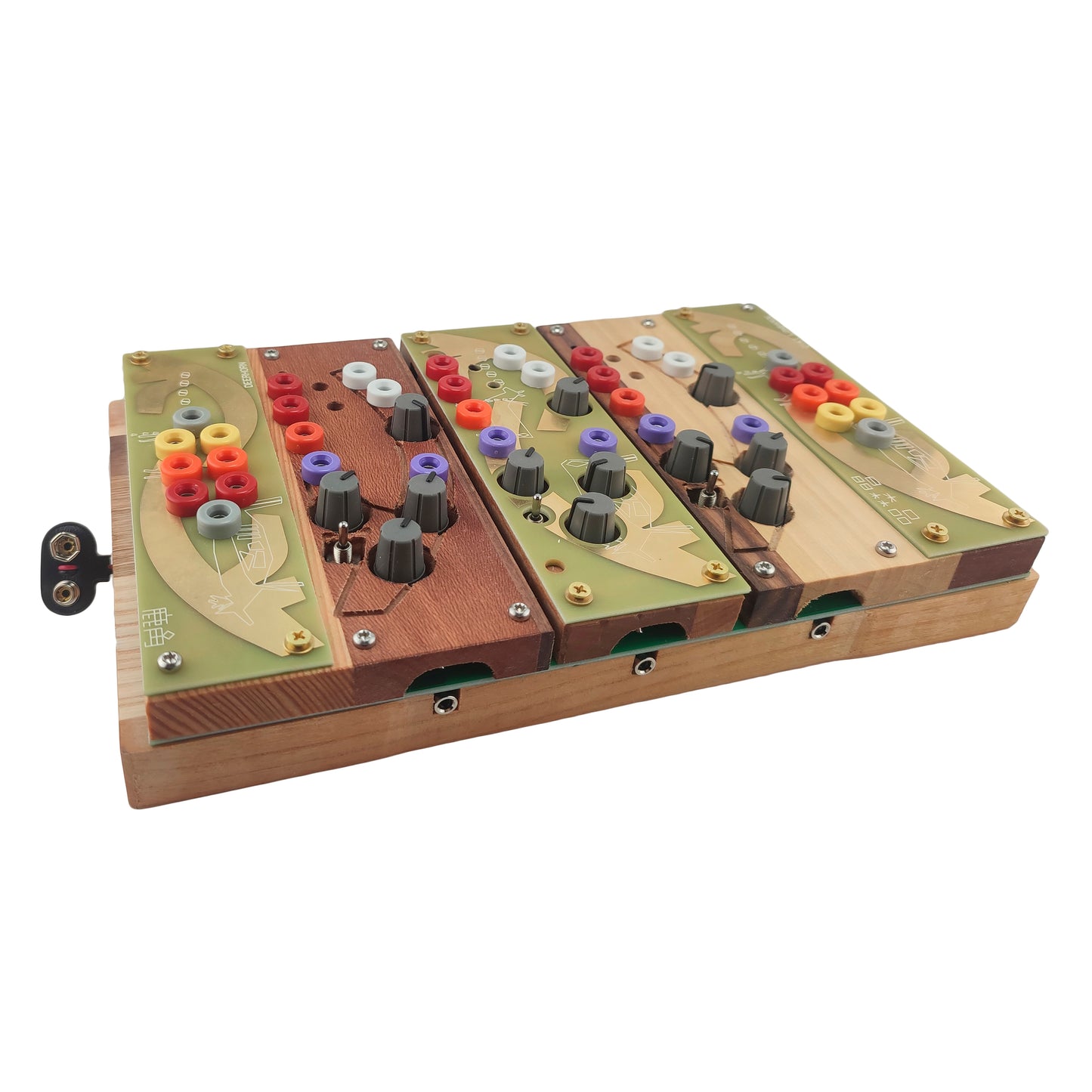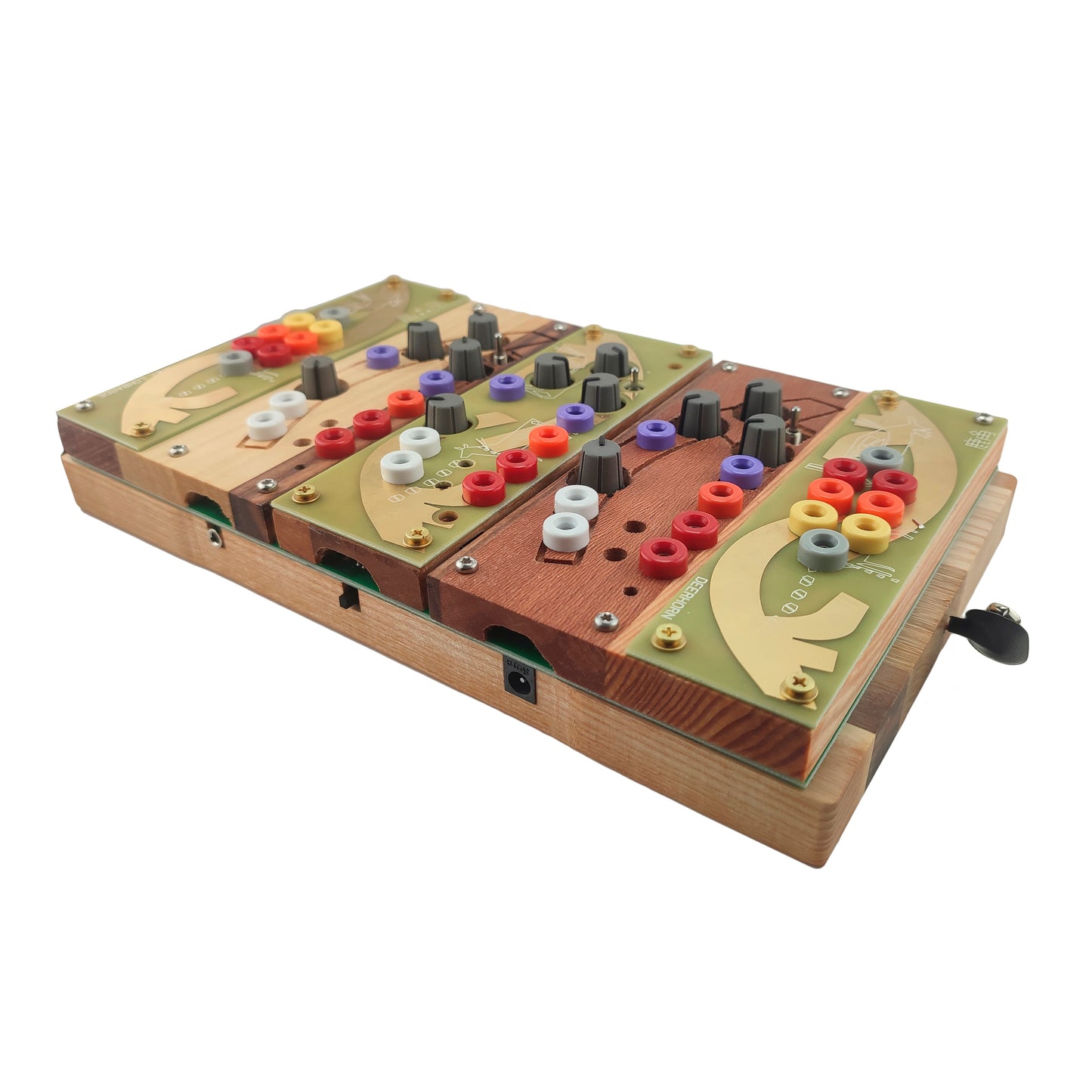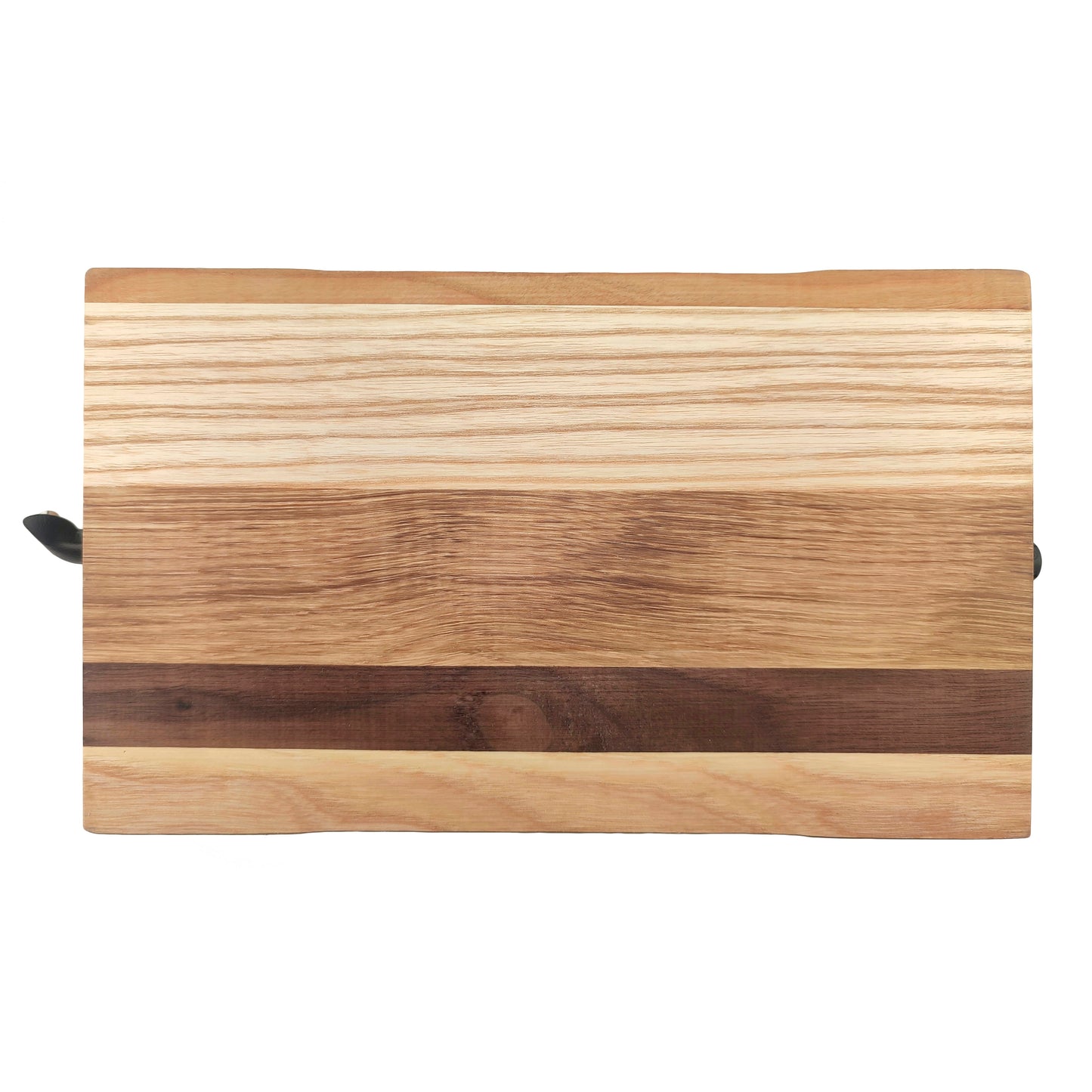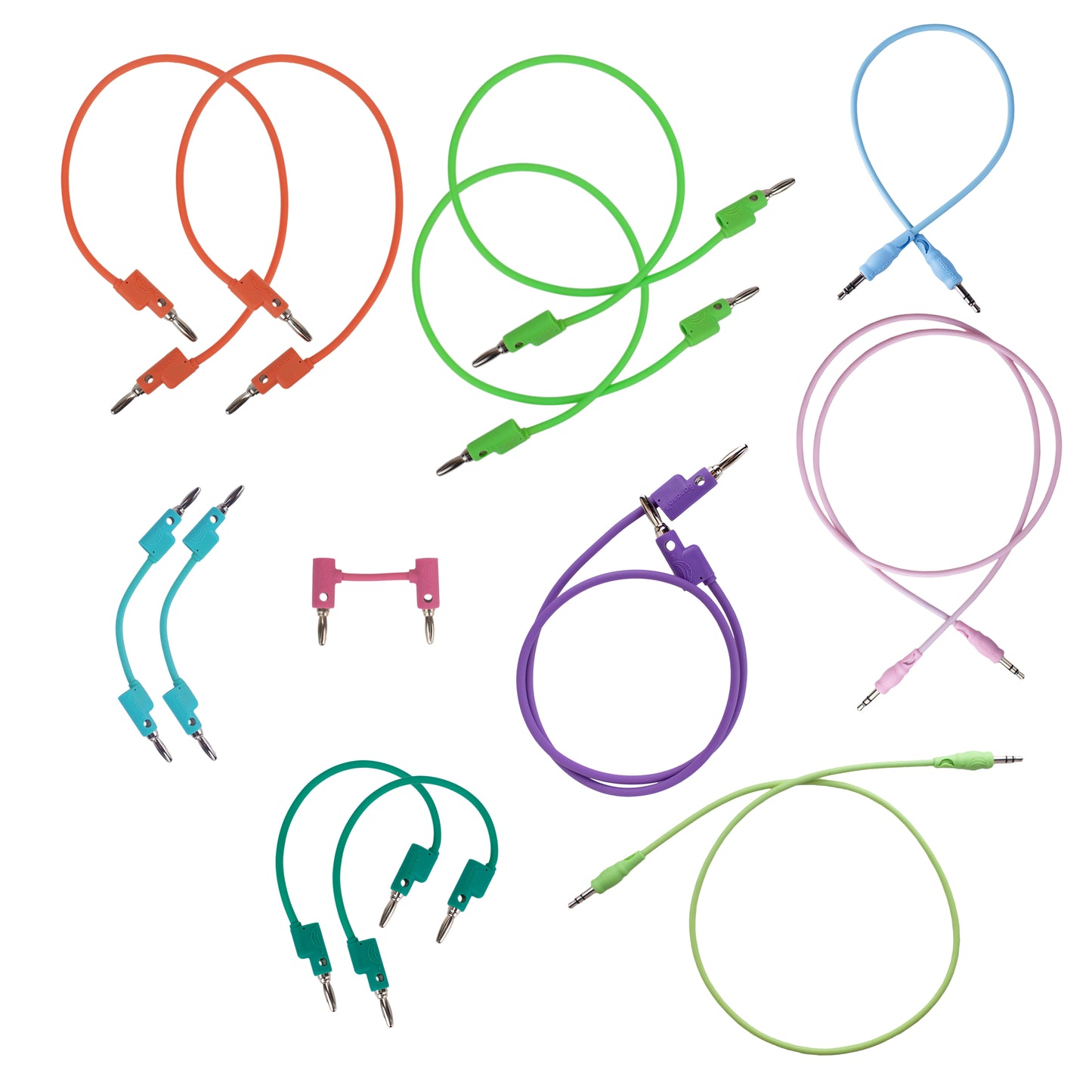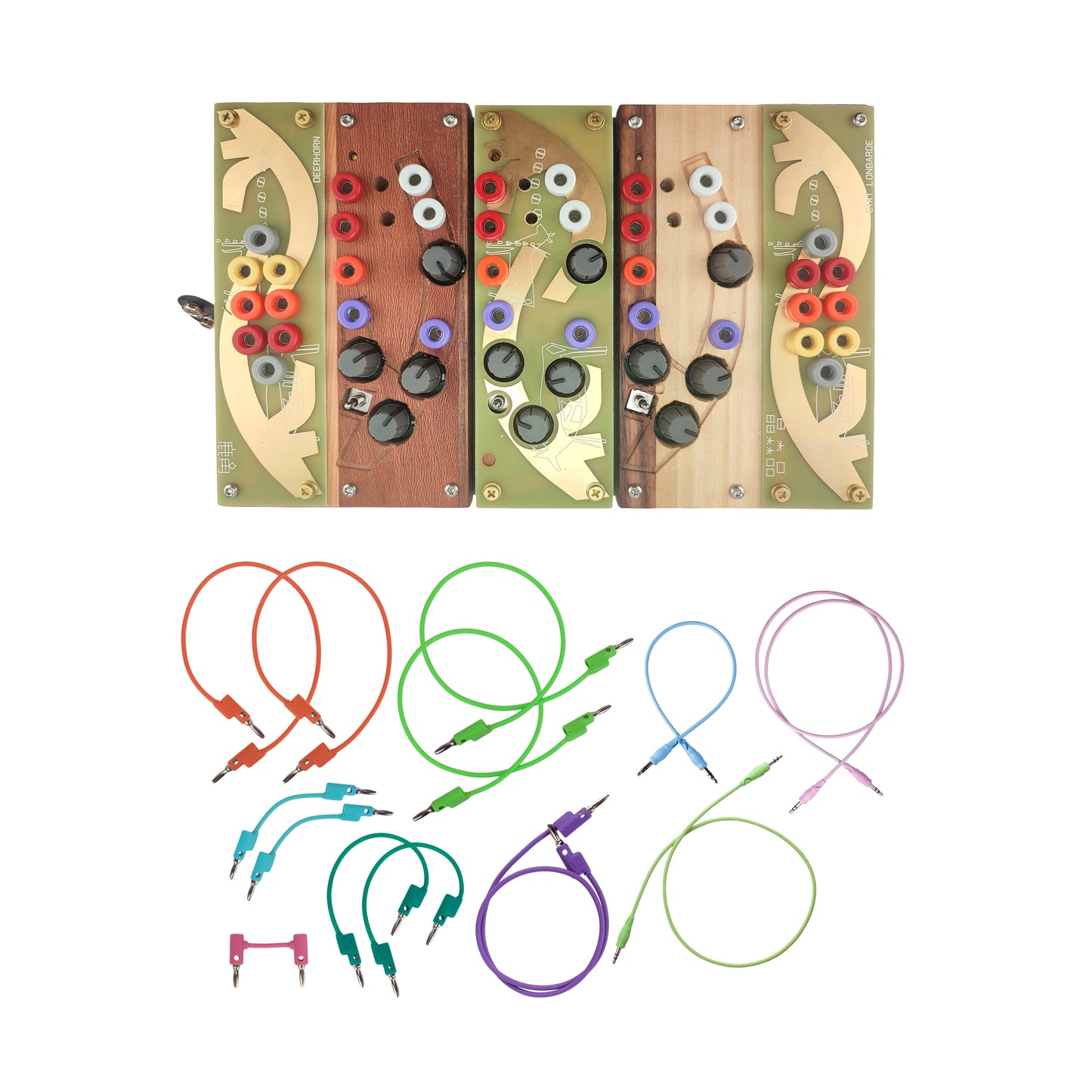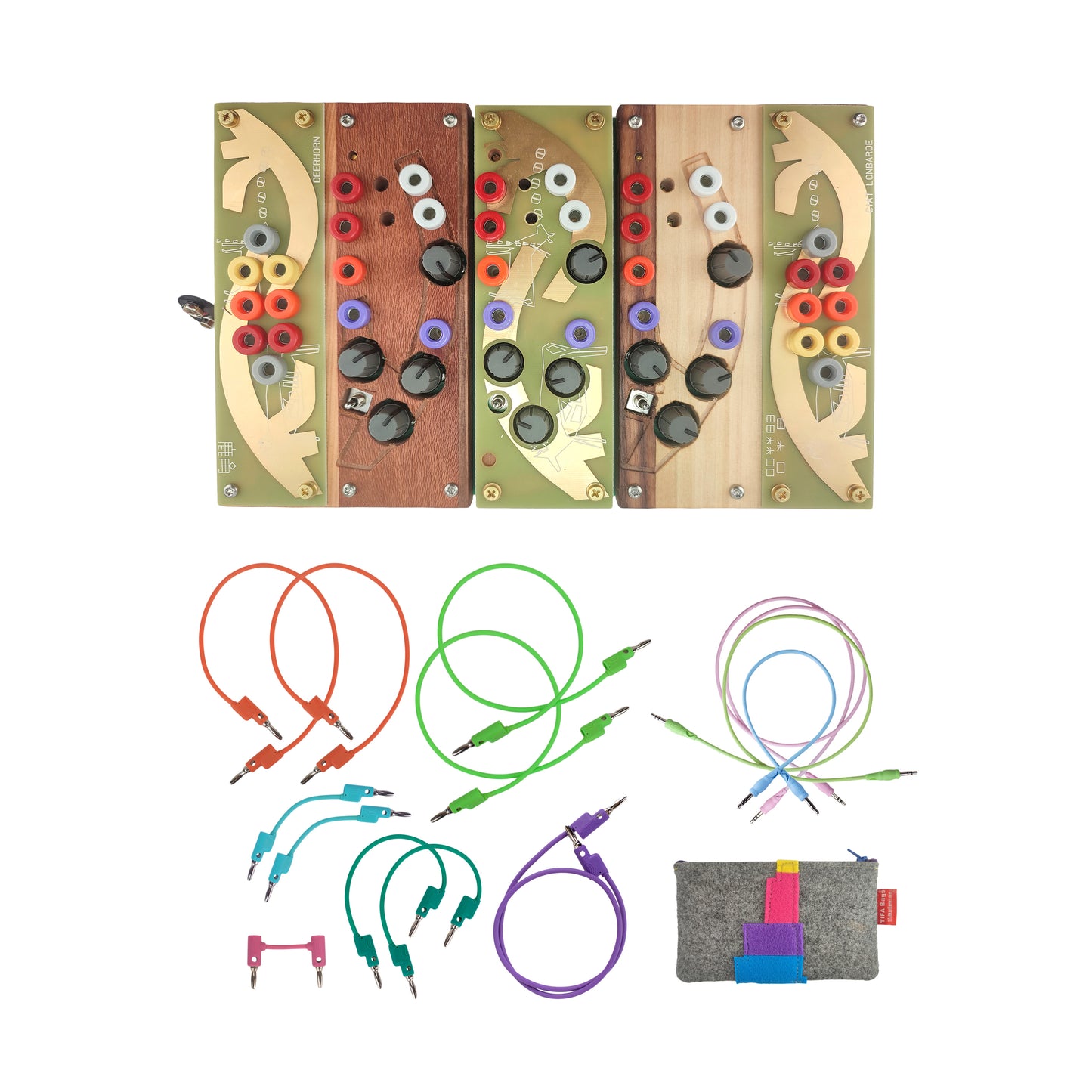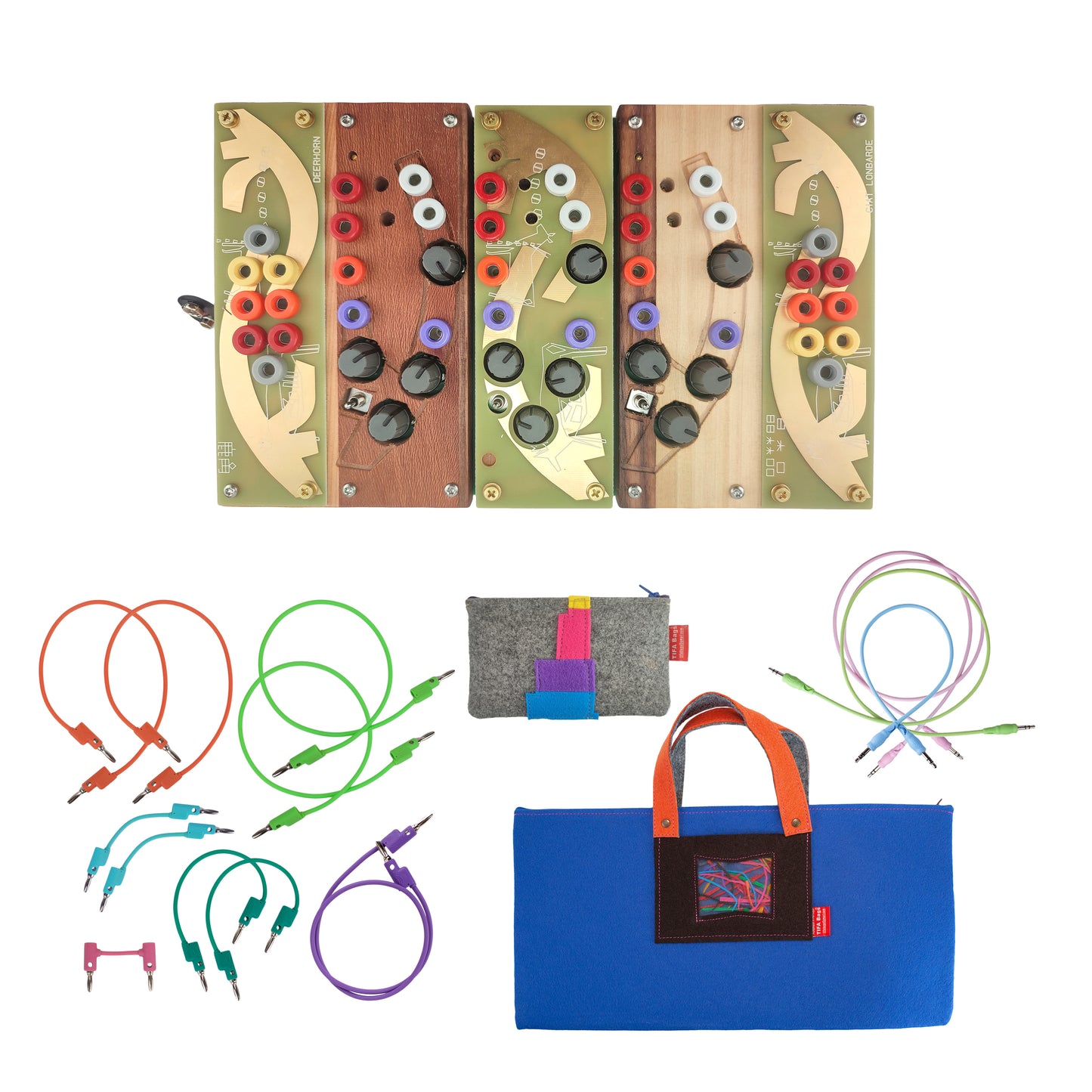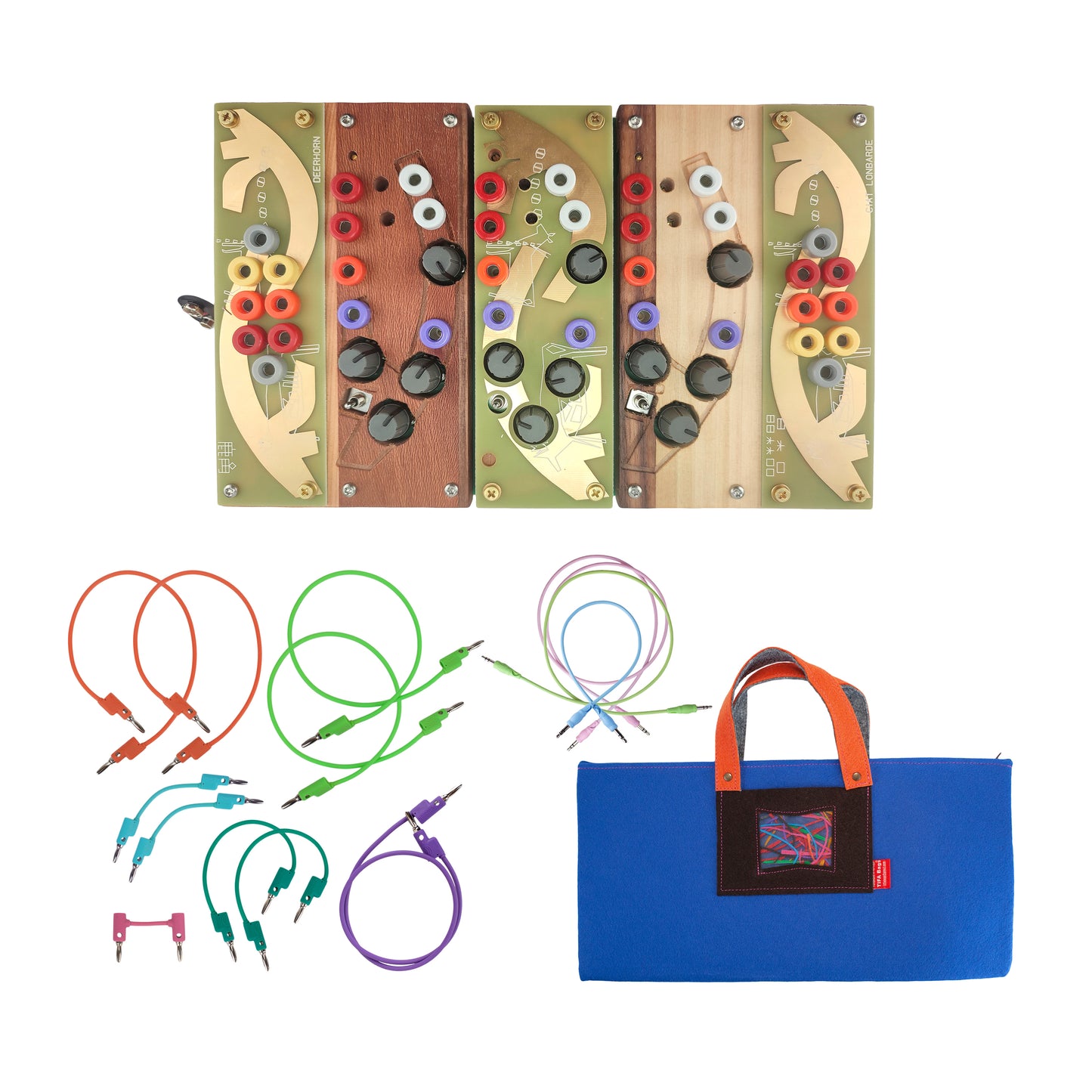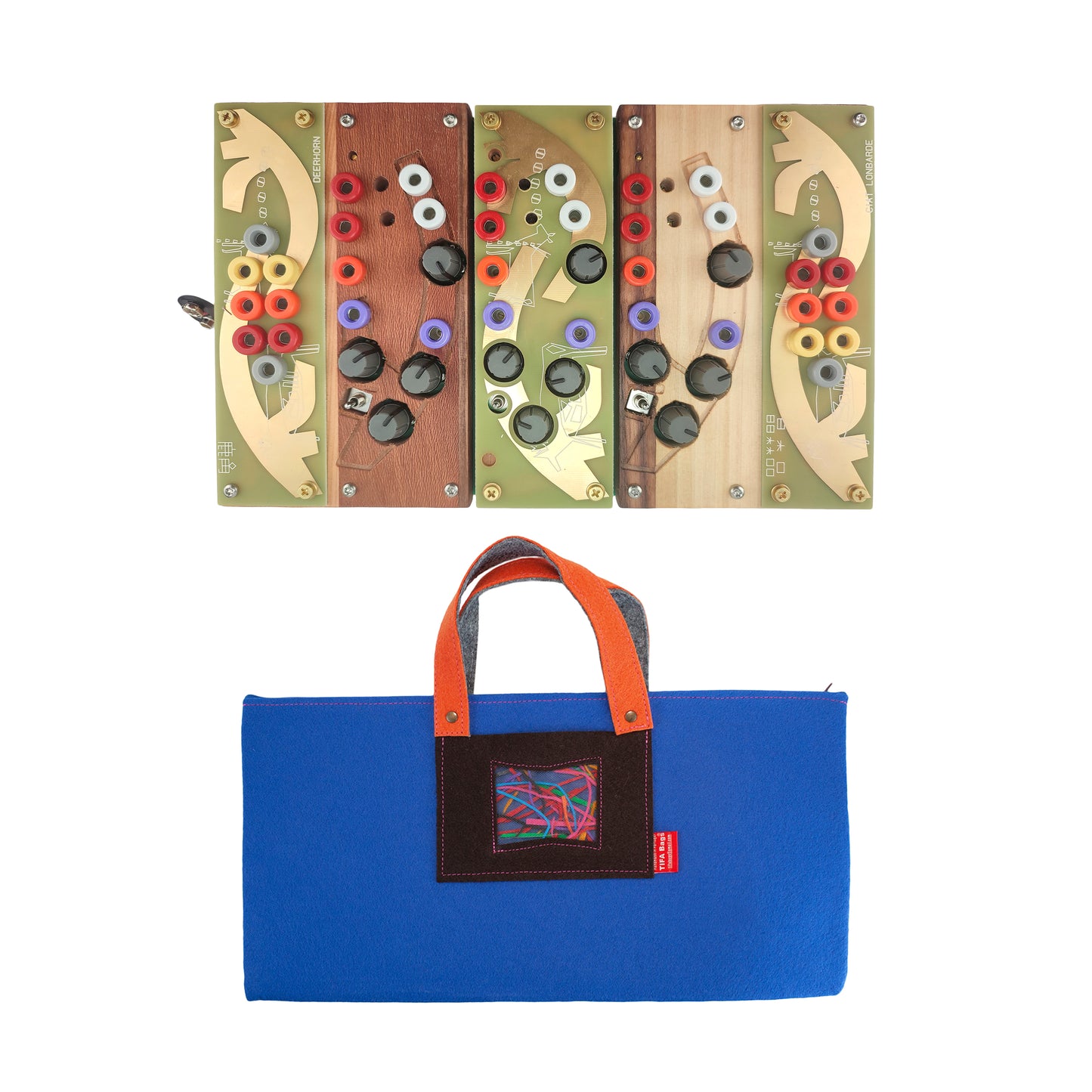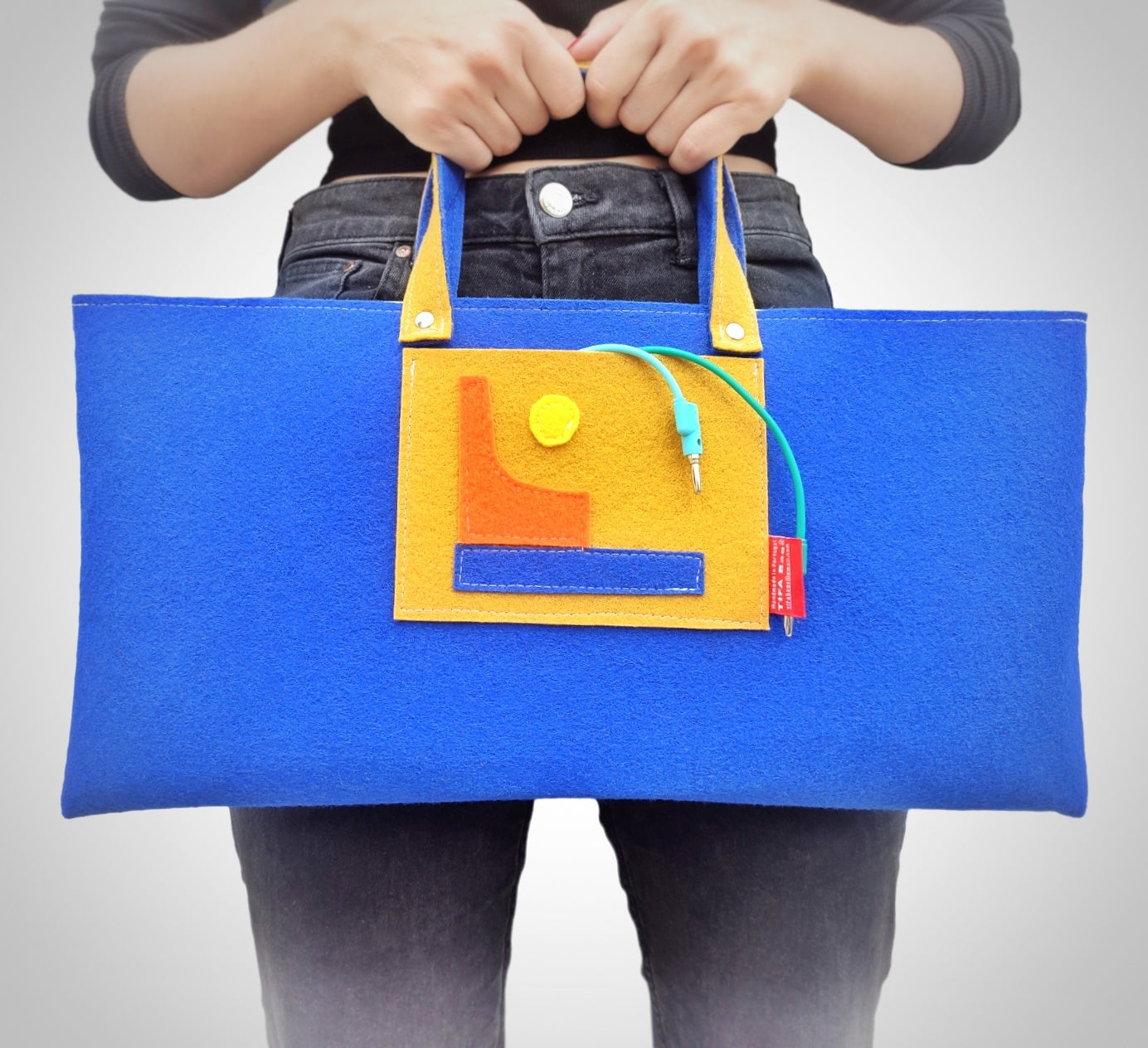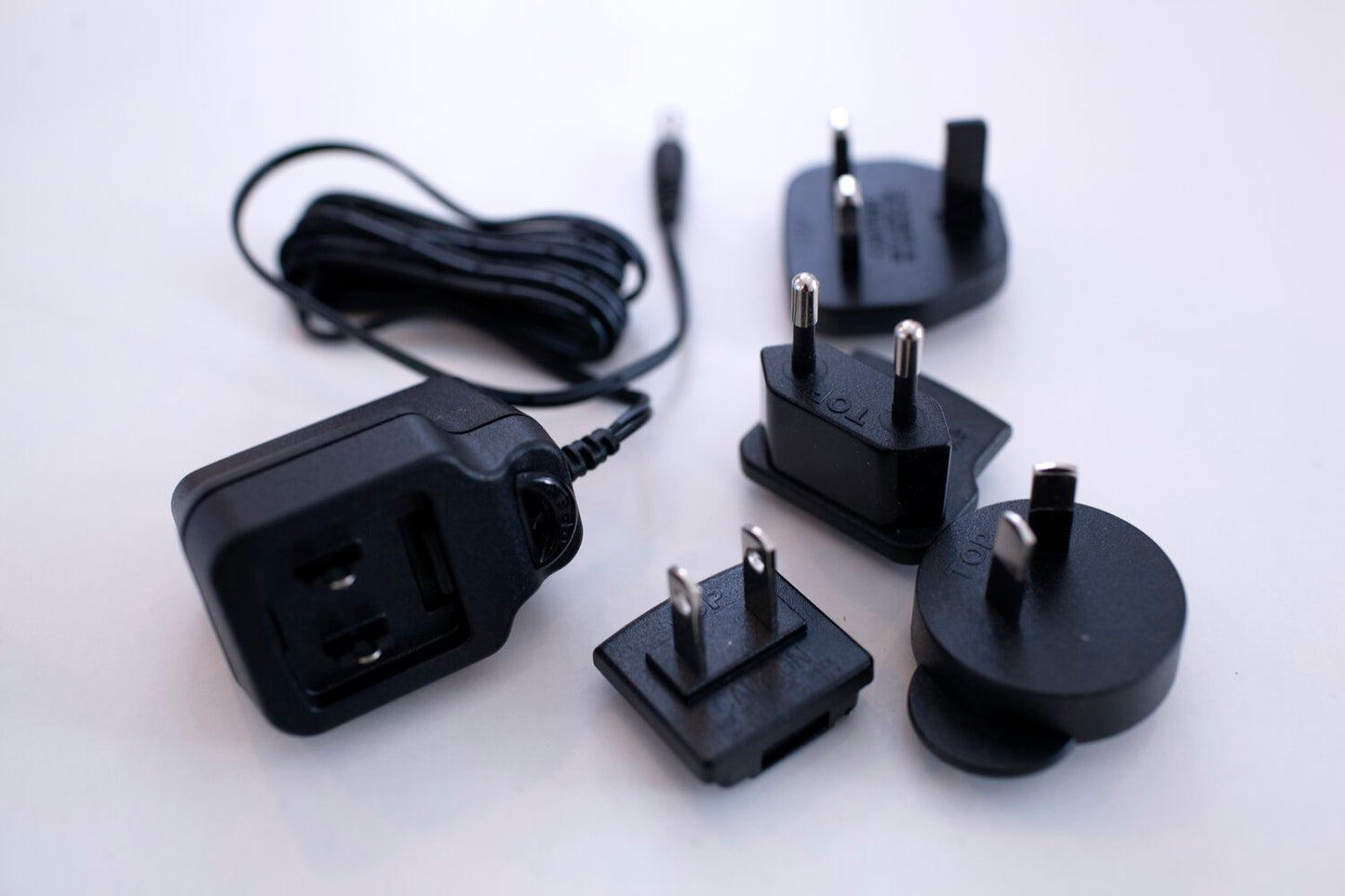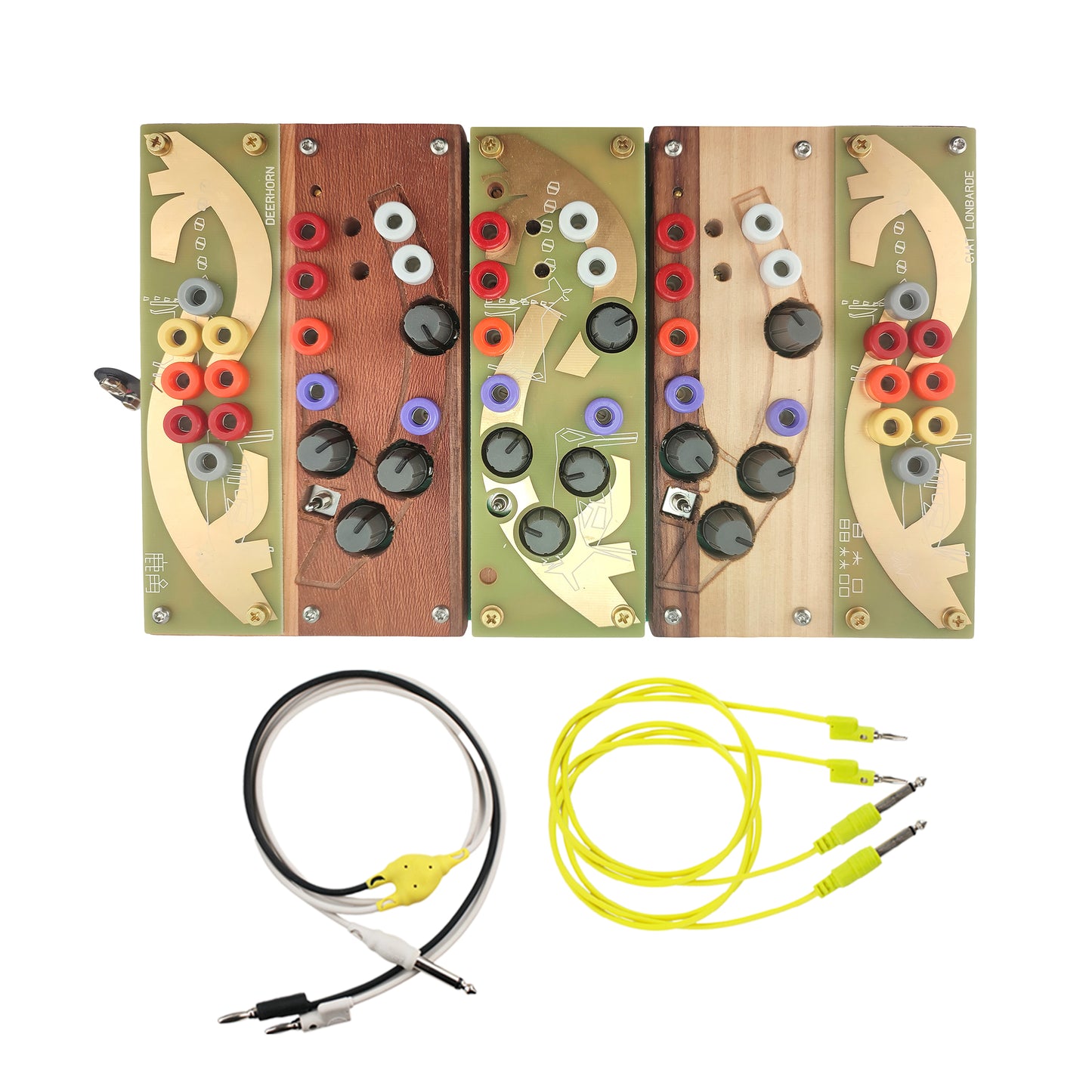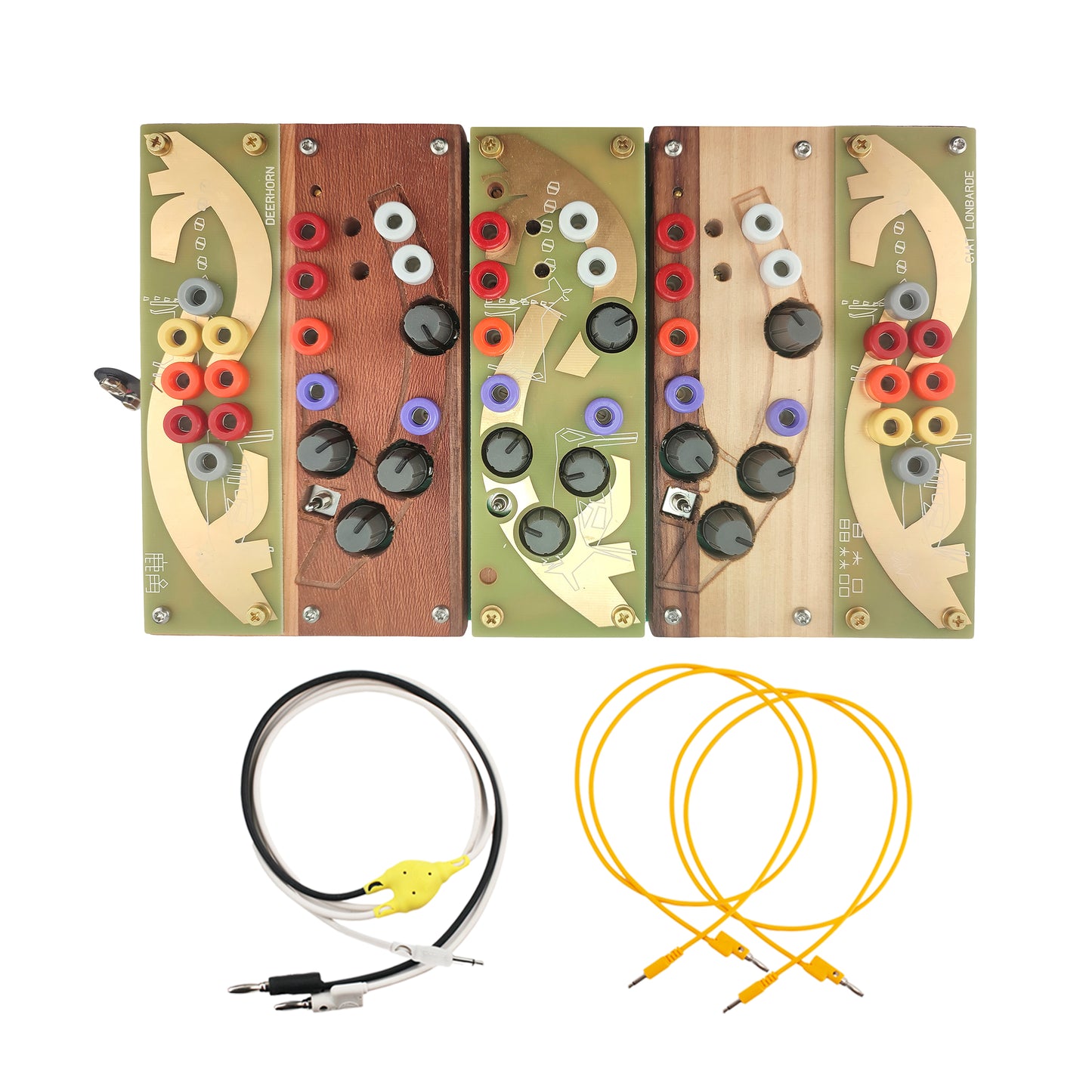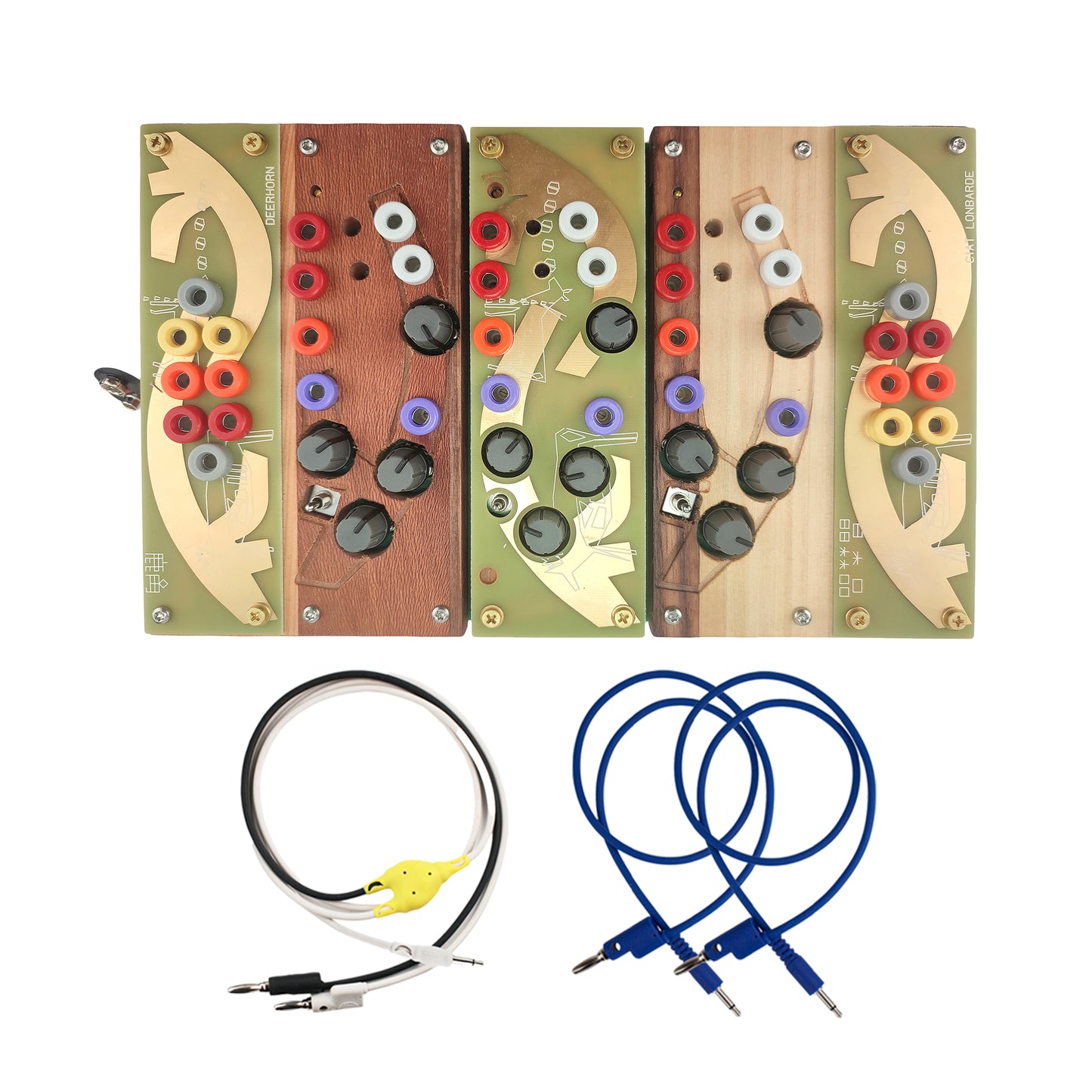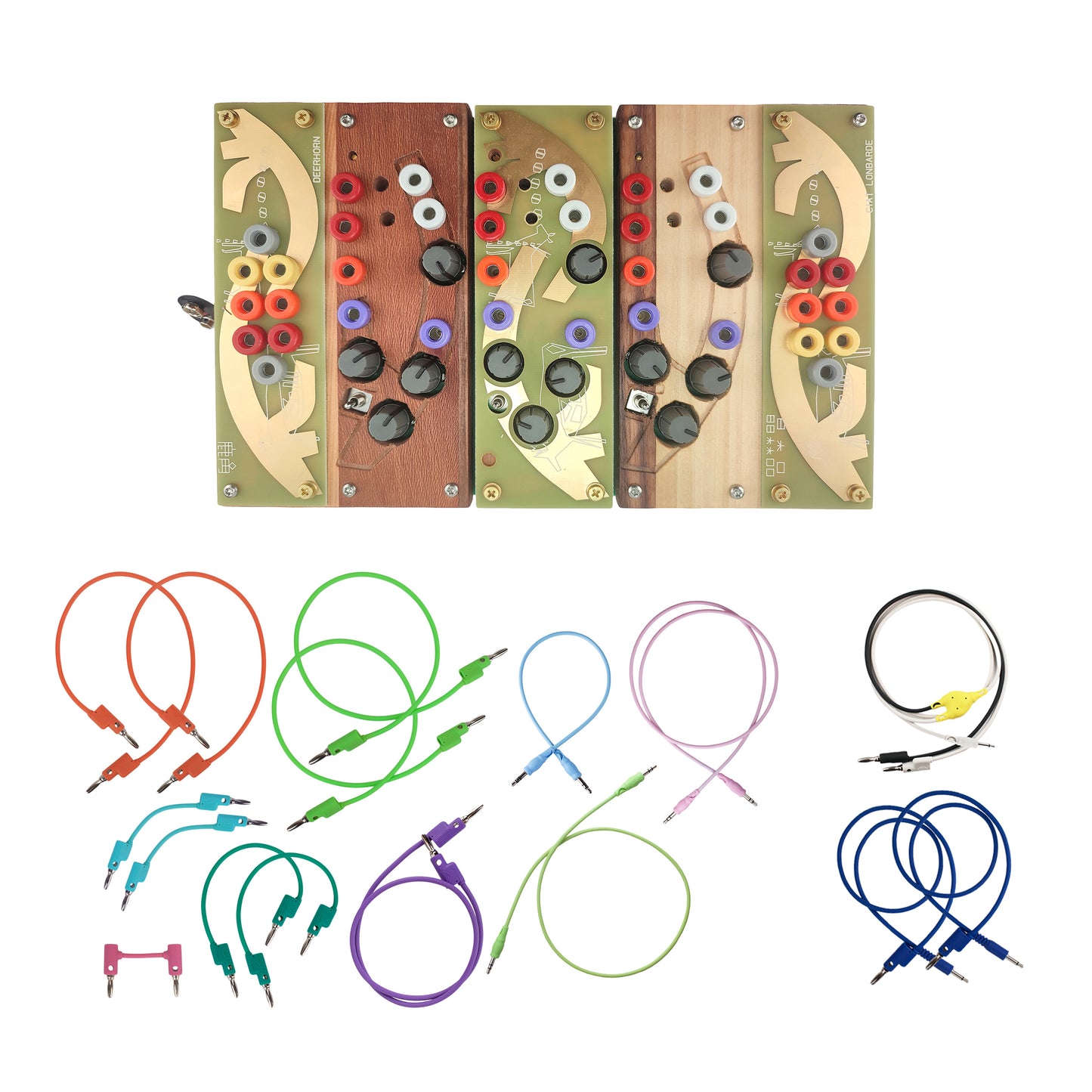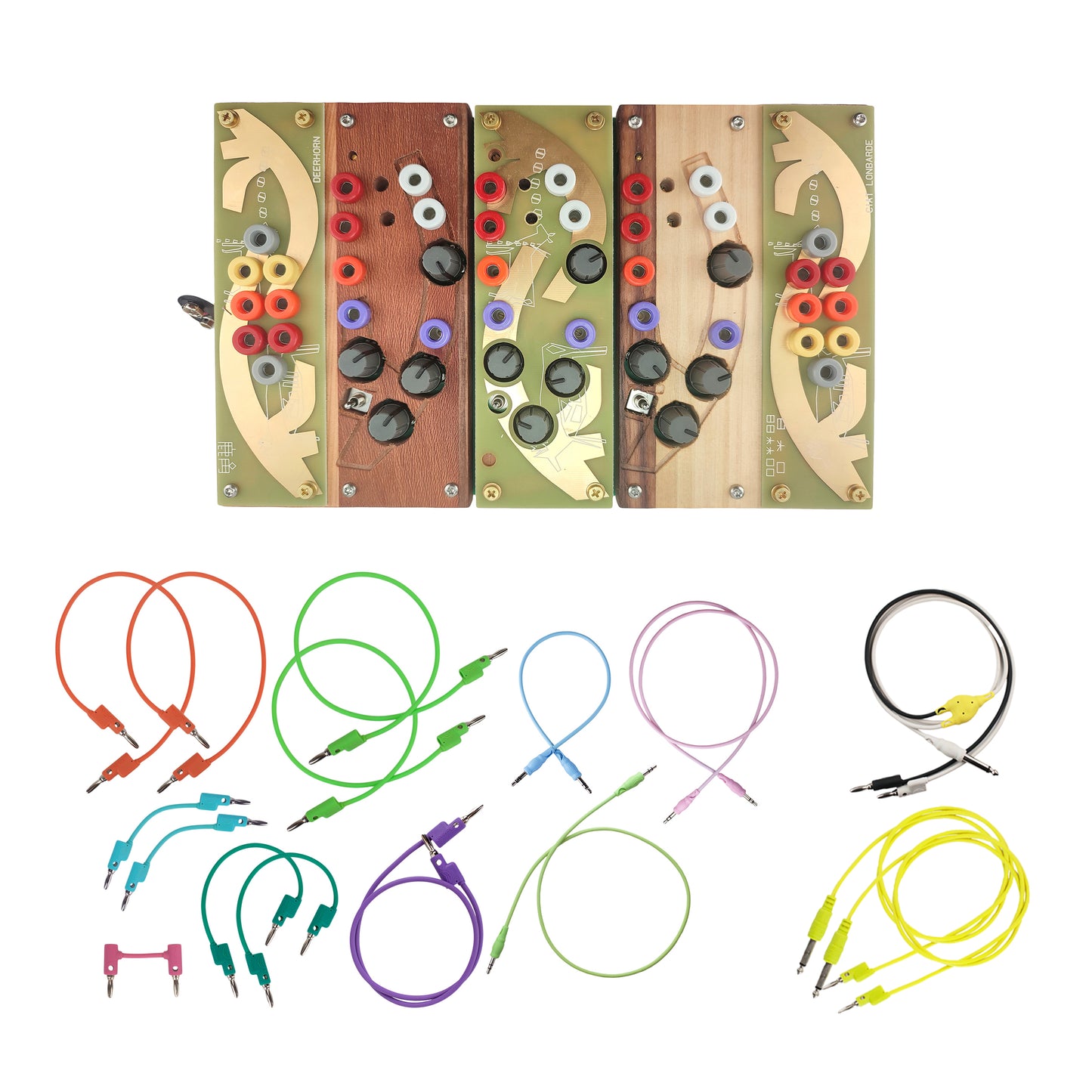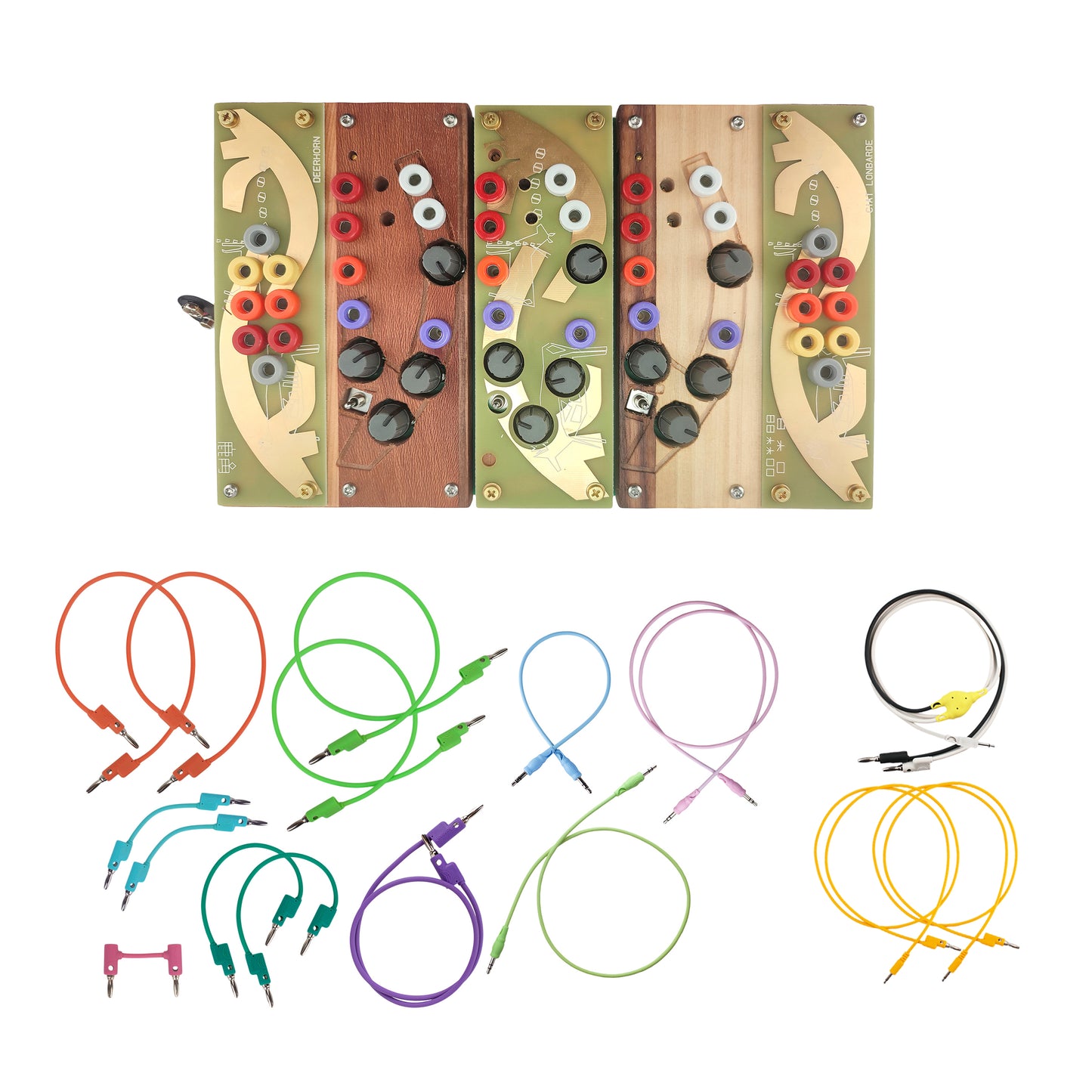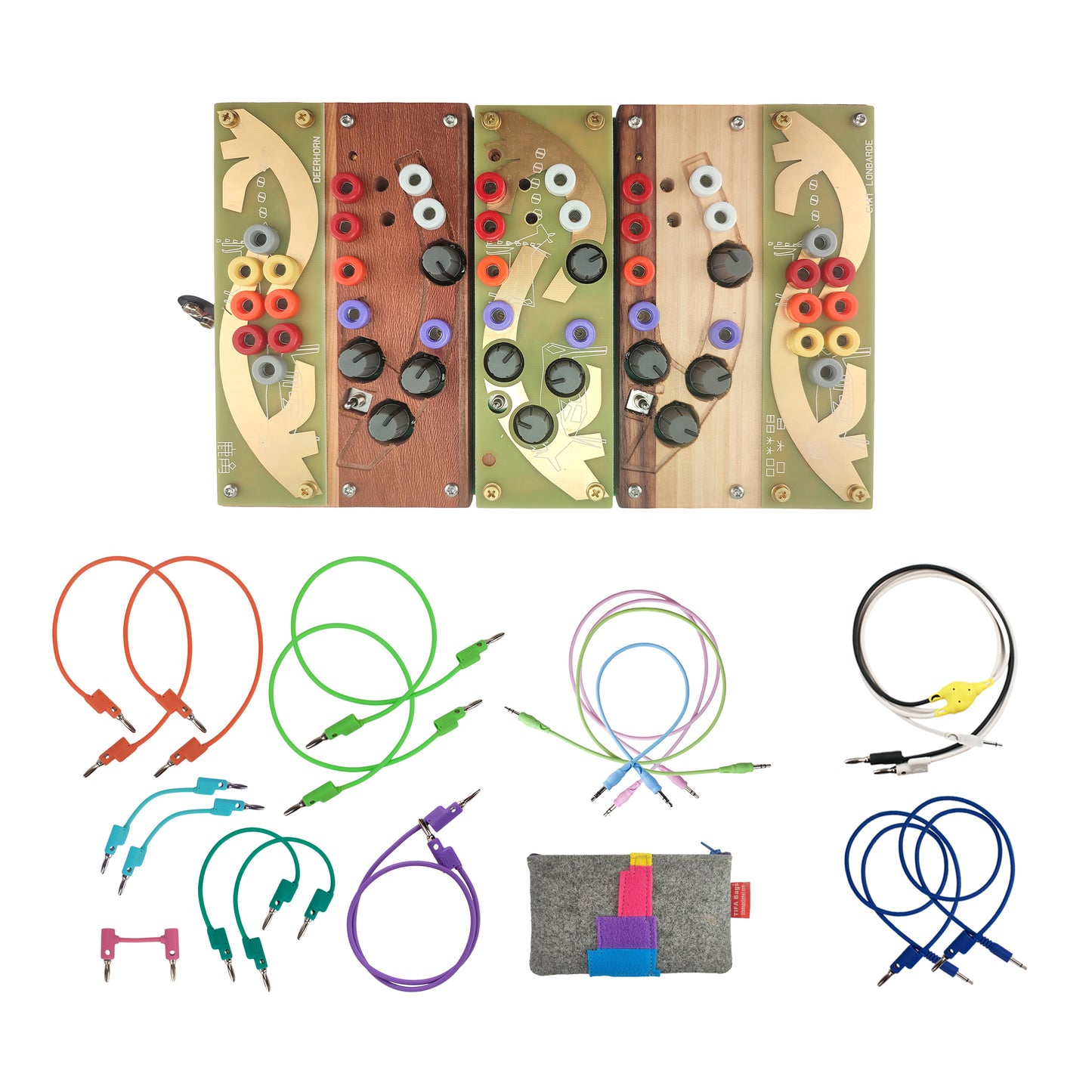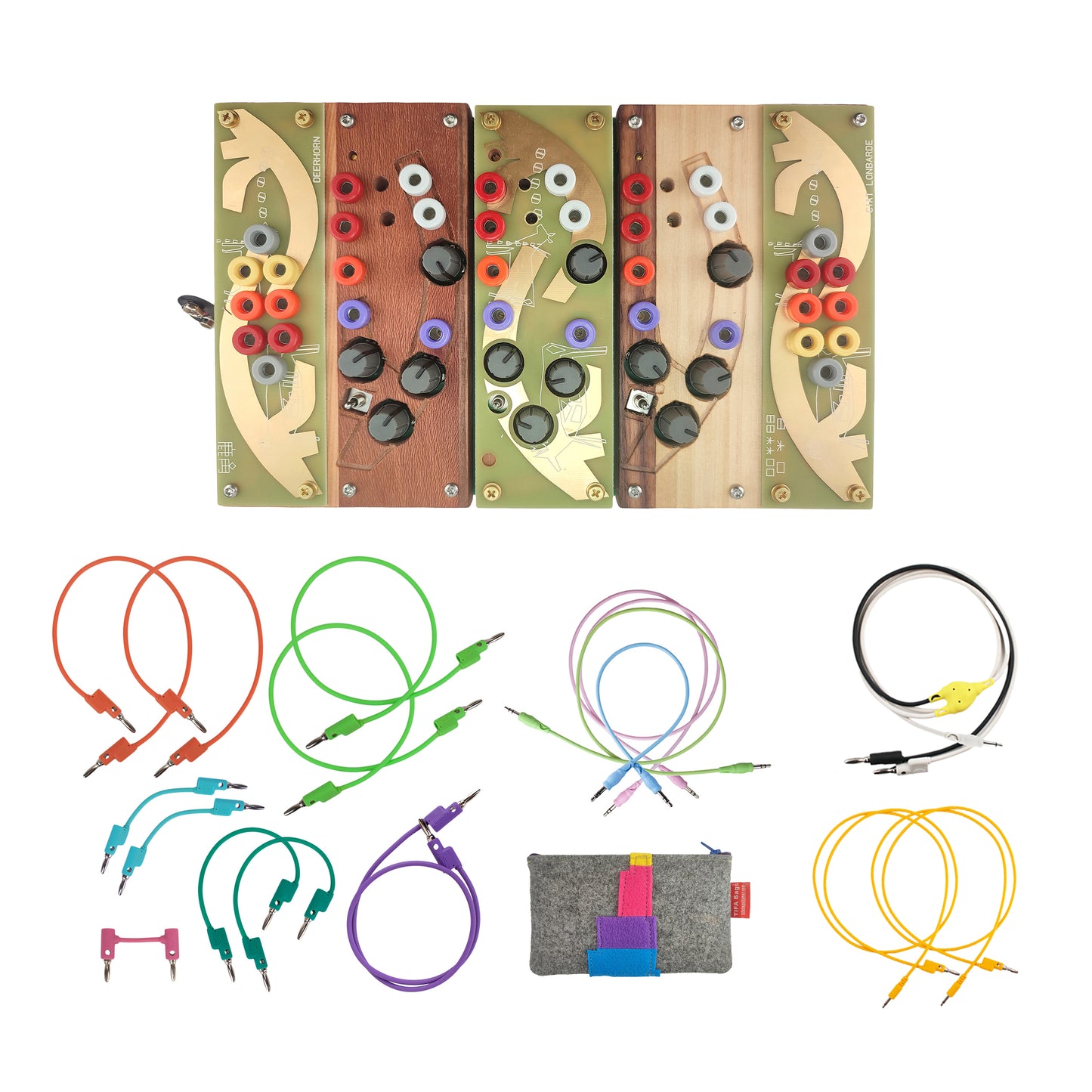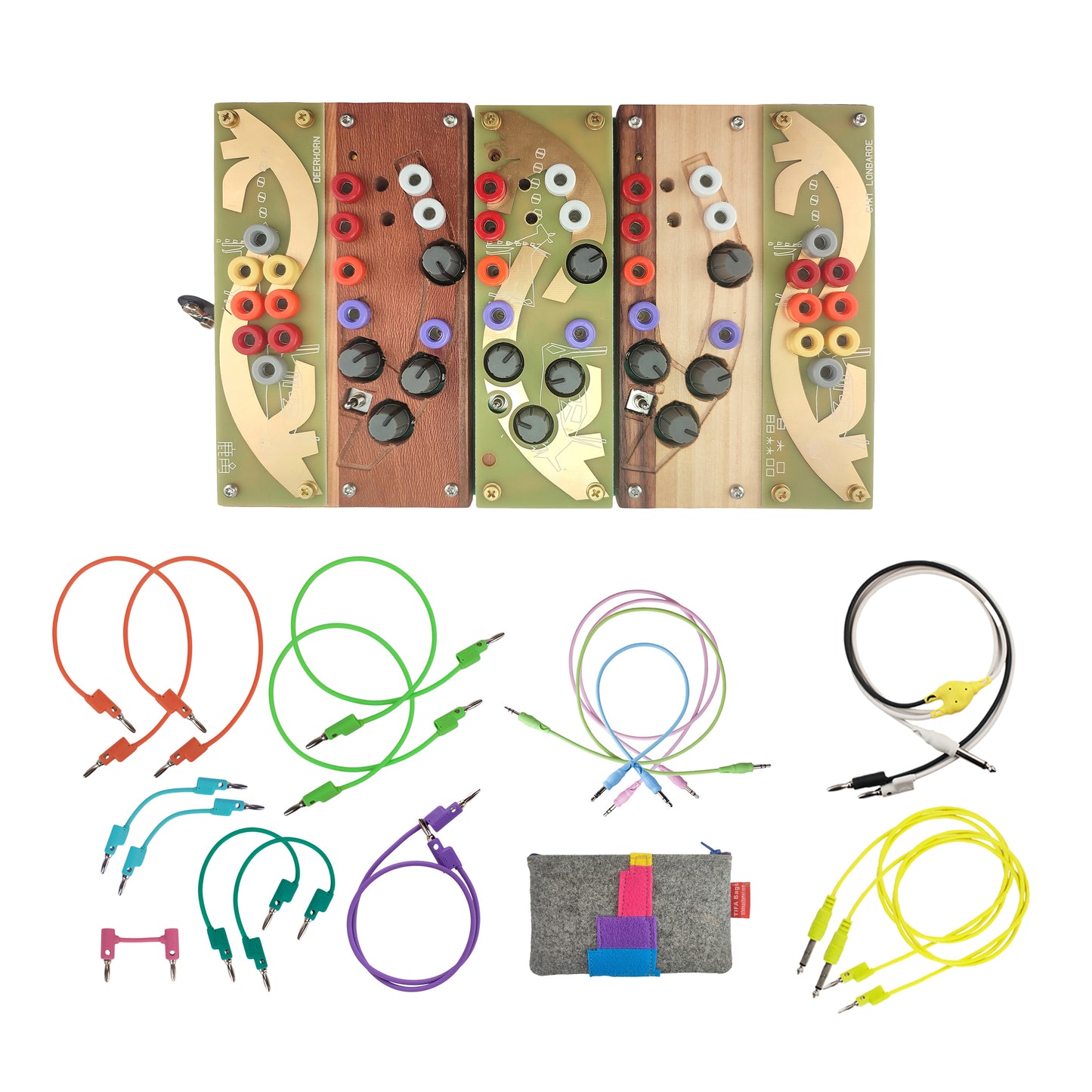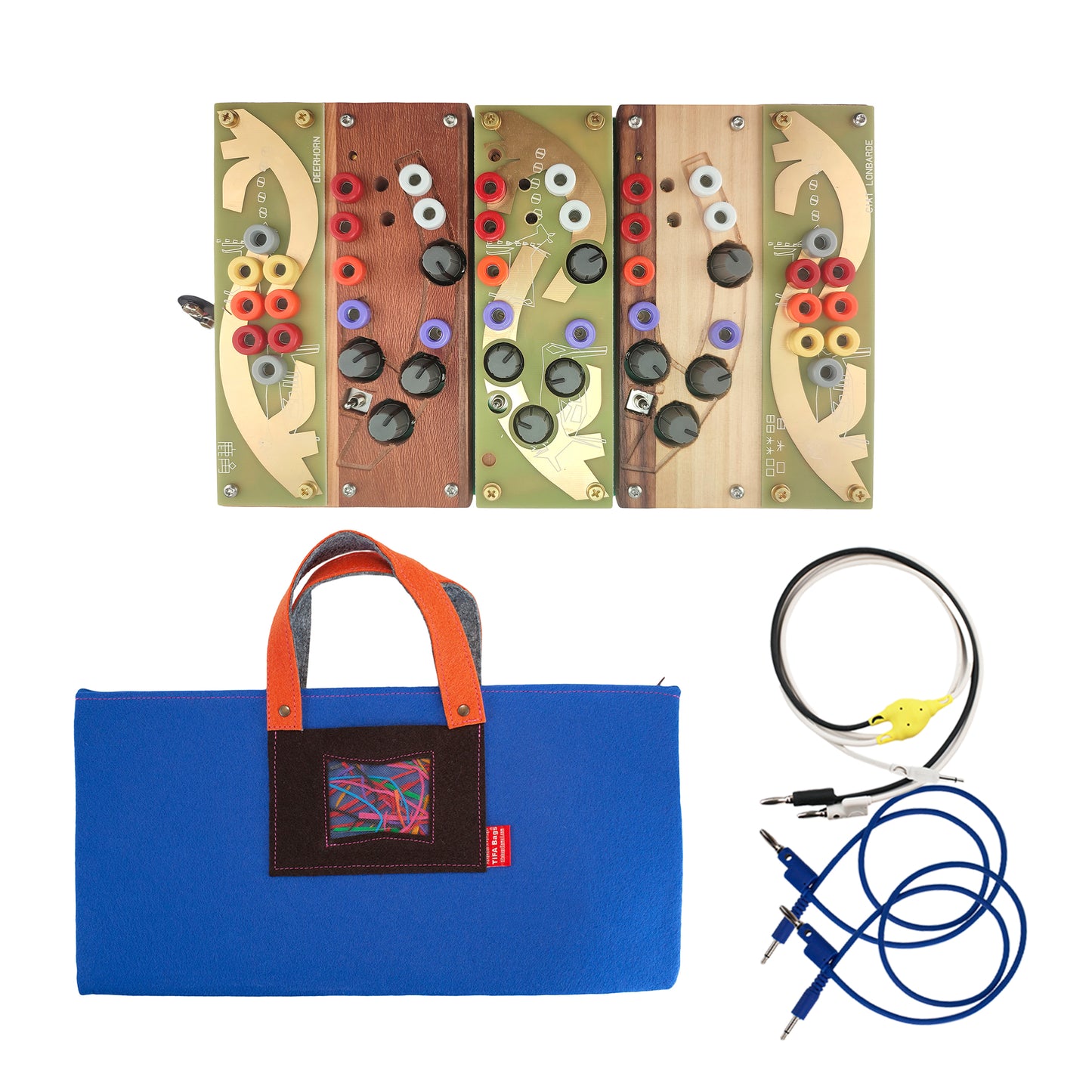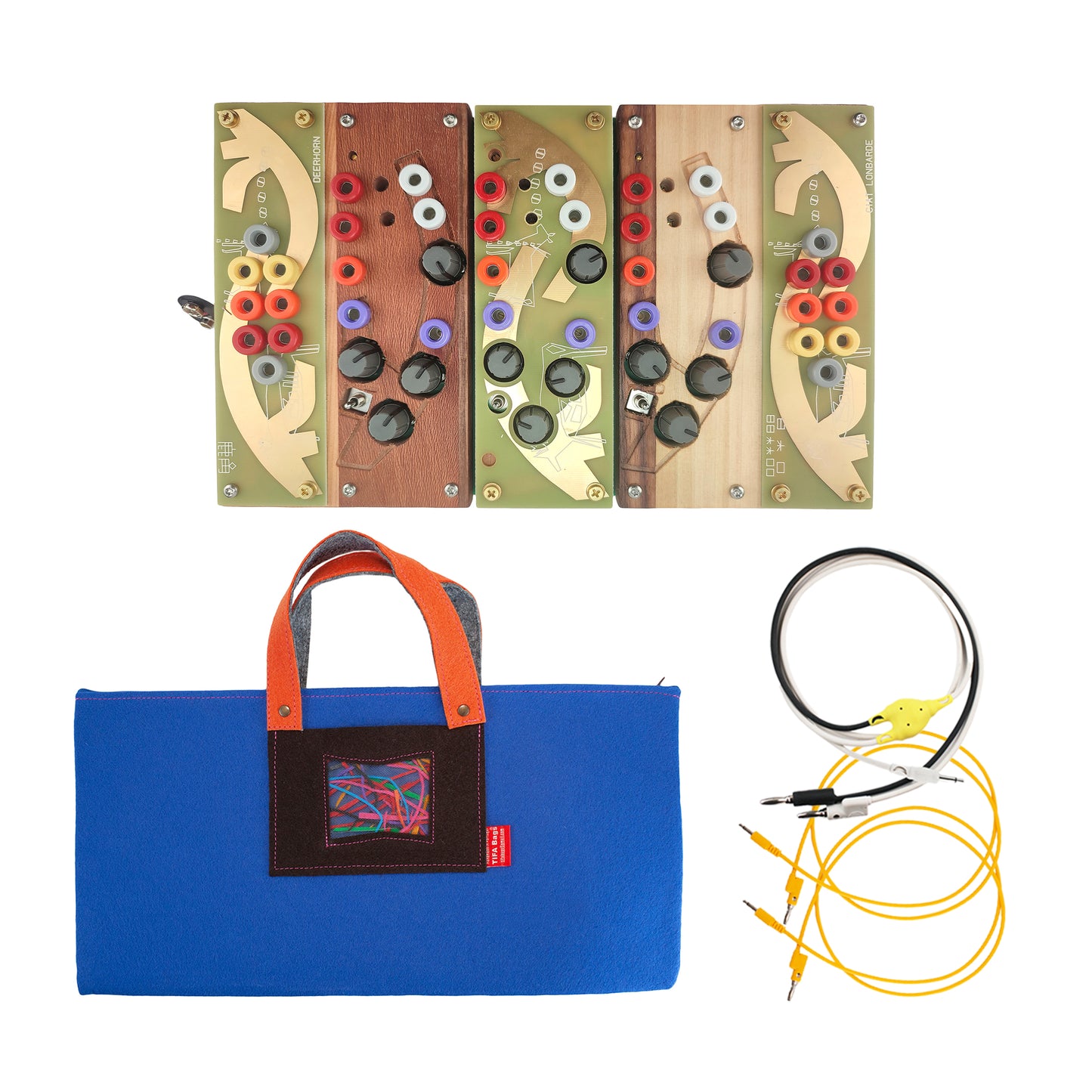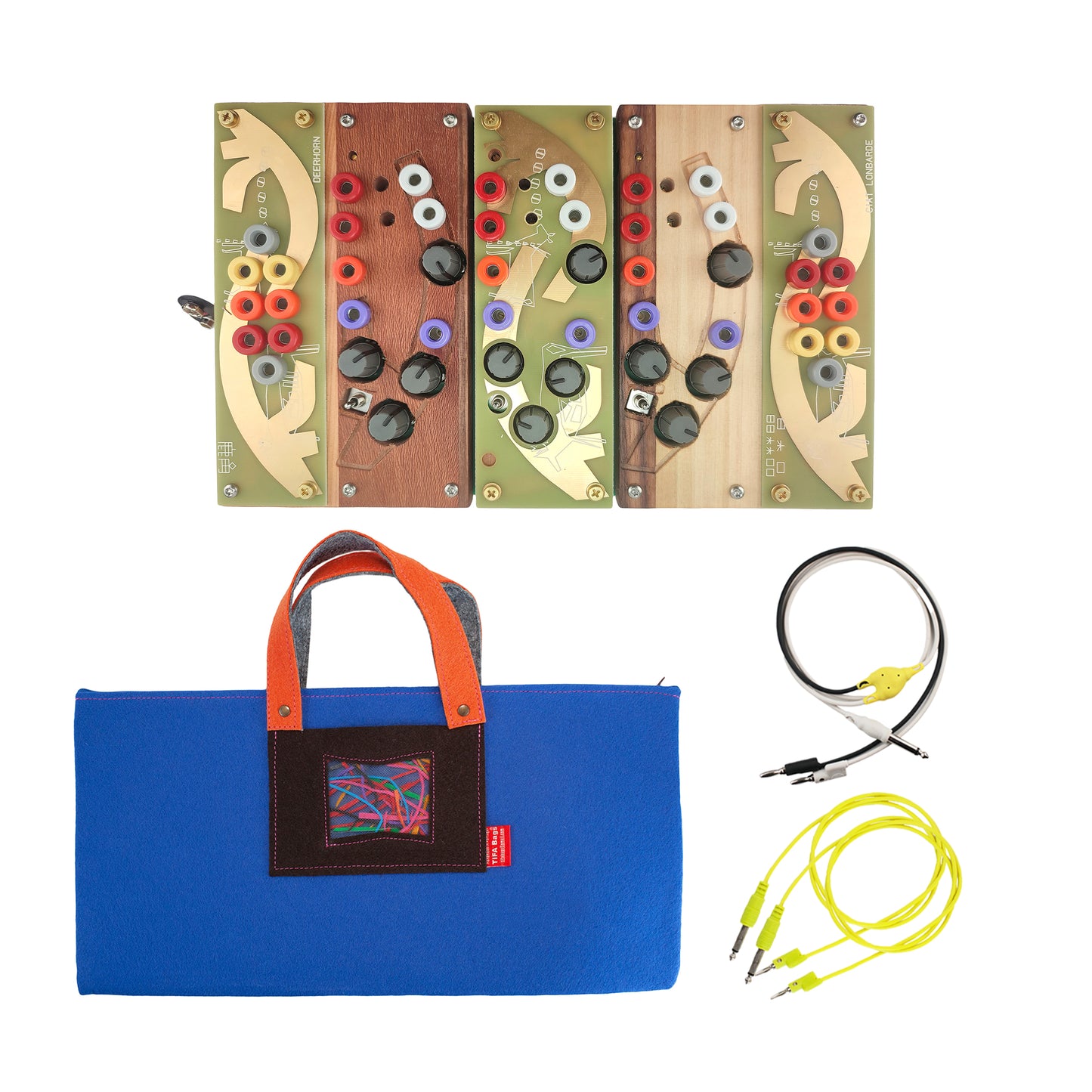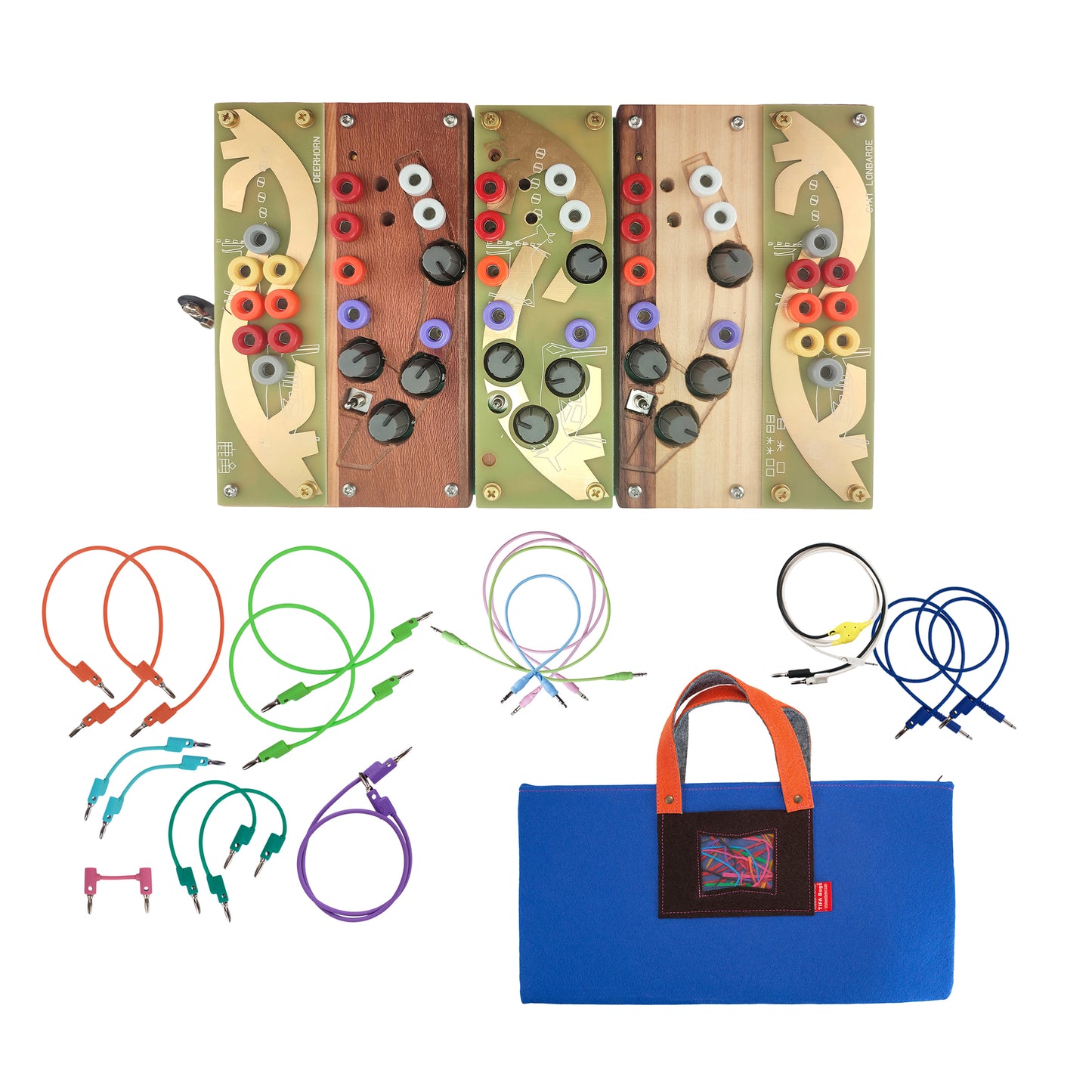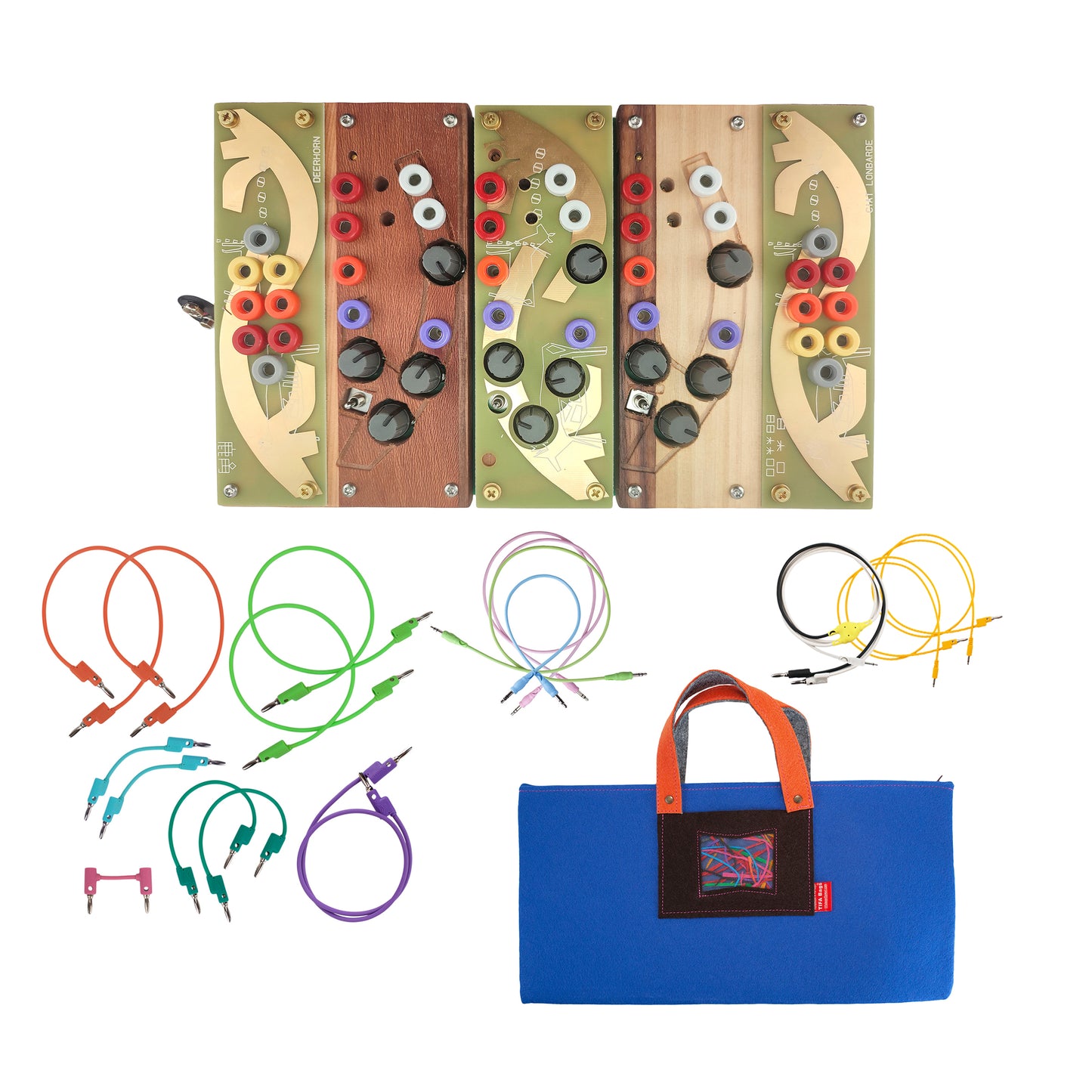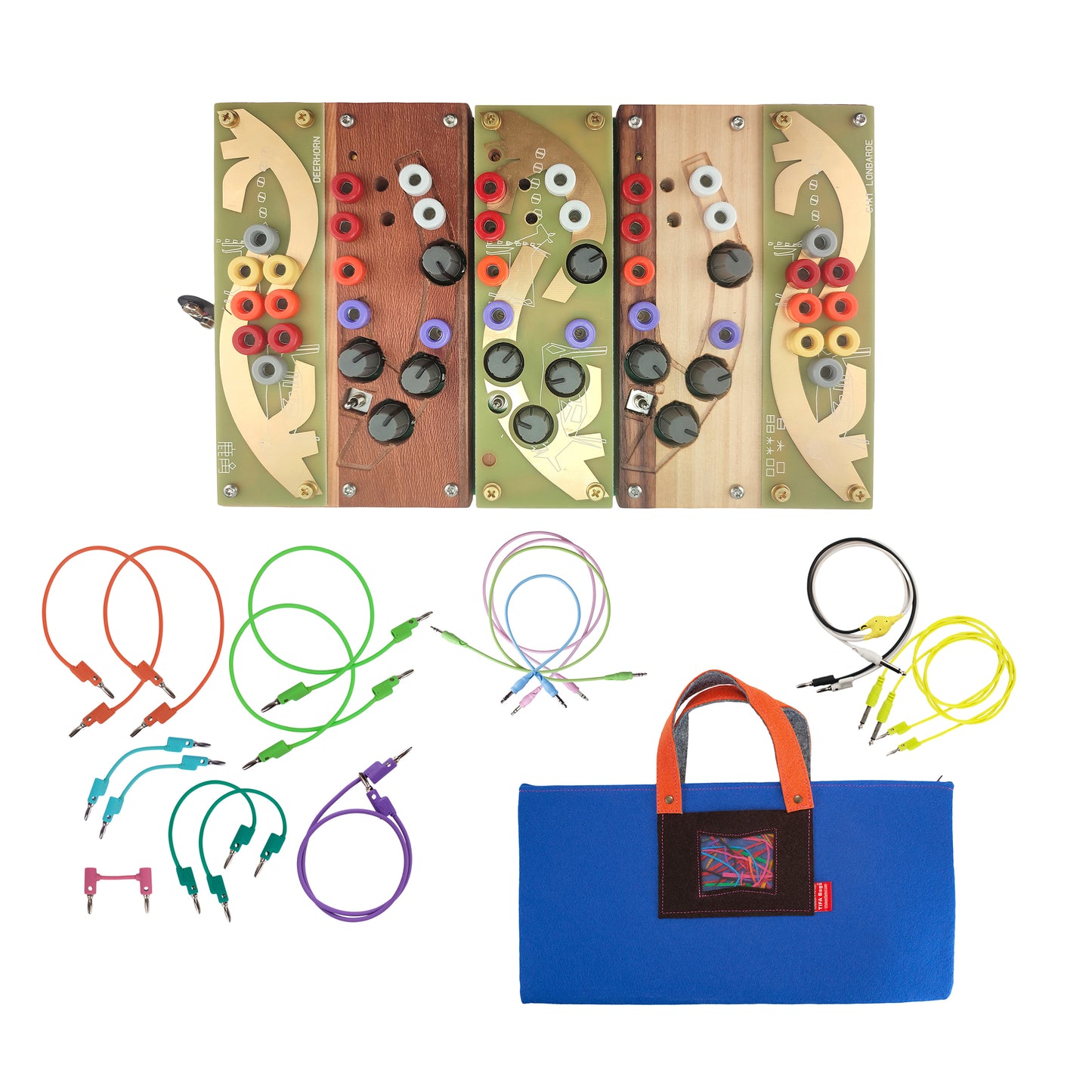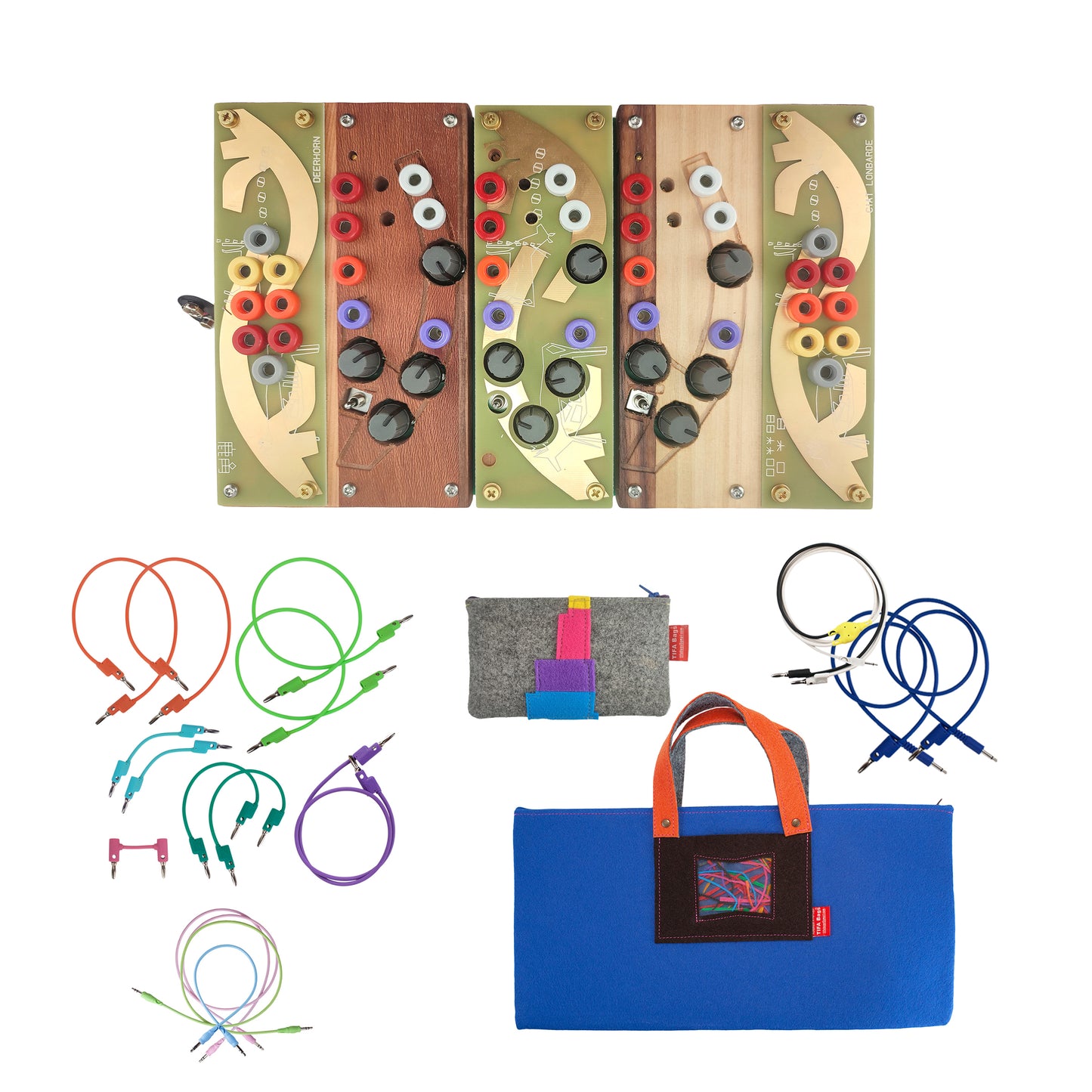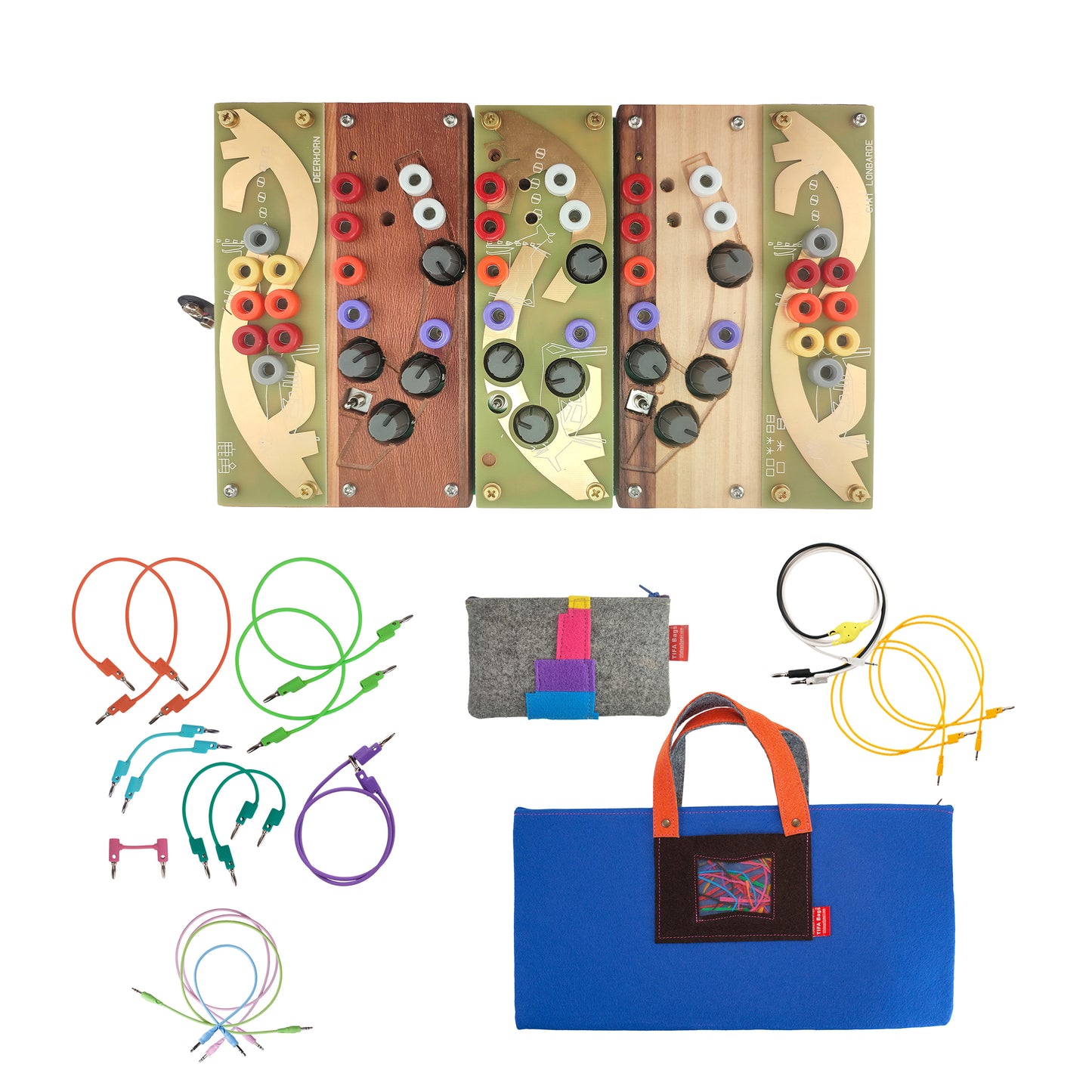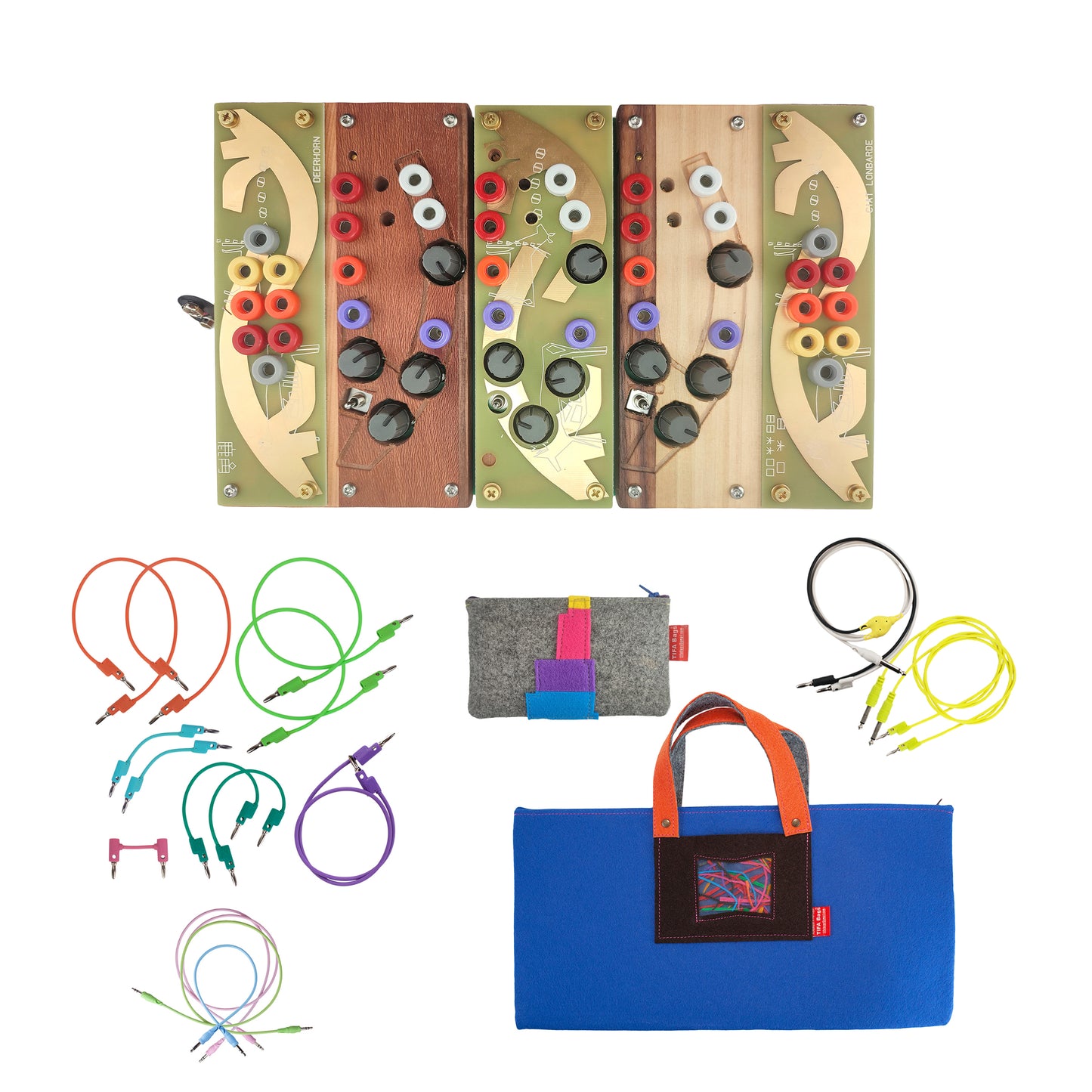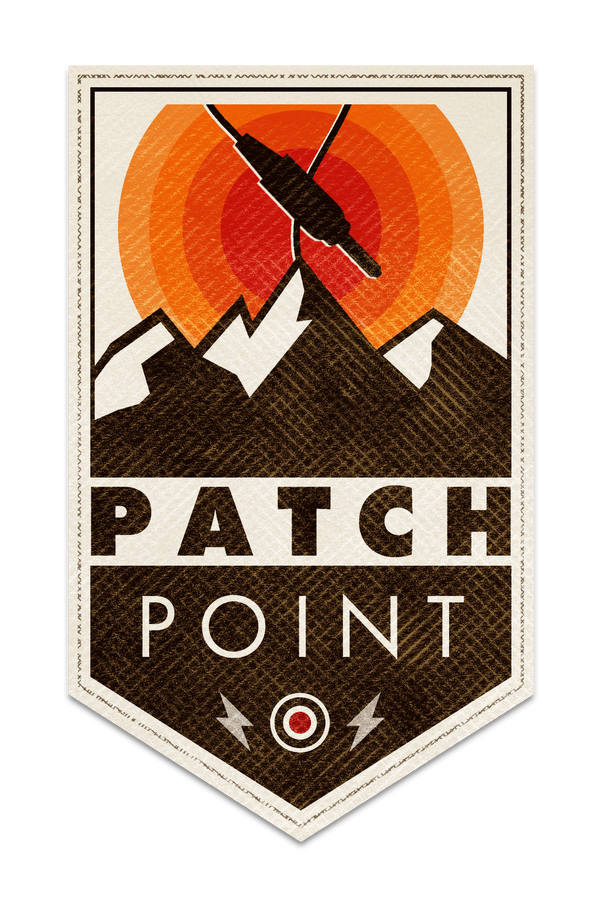Ciat-Lonbarde
Ciat-Lonbarde - Deerhorn
Ciat-Lonbarde - Deerhorn
Couldn't load pickup availability
In Stock.
Each Deerhorn is factory trimmed. There is no need to trim them. Use the antenna knob, don’t use the brass trimmers. Contact us for support before you touch them.
Comes with Universal 12v PSU
(French and Japanese text below)
Text by Peter Blasser
The design of the Deerhorn circuit has evolved much since it was first created to answer Clara Rockmore's original complaint with the Theremin: "Can there be more than one pitch?". Lev Theremin responded that one would need more than two arms, but the Deerhorn makes this possible by extracting gestural information from the radio fields and using it to control pitch and envelope. The current unit contains three of these antenna-synthesizer modules, and adds two extra, highly useful modules known as intersections.
An intersection module simply samples one deerhorn's antenna voltage at impulses provided by another module. It is a sample and hold, triggered by changes in gestural direction. Since there are three modules, there are six permutations, doubled because each module reports changes in both directions; there are twelve new outputs, plus four special ones that sample in random steps. Each deerhorn module emits a different light— red, orange, and yellow— which also color-codes the intersection bananas to show which module is being sampled.
The Deerhorn modules are color coded. An [orange banana] reports its primary product: a control voltage representing the hand's distance from antenna. The impulses utilized in intersections, are also available as [red bananas]. These are like two complimentary square waves that flip when the hand changes direction.
The base tone of deerhorn is a simple two tone straight bellow. That's as your hand moves in towards the antenna and back out again. You must always tune the response first, so that the two leds cross each other at a comfortable range from the antenna. Fine tuning is done with the top knob.
The bottom cluster of controls deal with the synthesizer frequencies. The bottom knob sets the base pitch of both oscillators. The next two knobs are associated with the [purple bananas]: they are FM tuning knobs. The switch on the stub of the deerhorn orients the stereo position of the oscillators. In middle position, it turns them off (for the stereo auxiliary inputs). The white bananas output the same stereo sound which is output the main output, but in single tracks so it can be used as separate modulation sources.
For coarse tuning of the antenna, two trimmer capacitors lie beneath every deerhorn module. They are well-tuned upon shipping, but may always be accessed via a face-port with small slotted screwdriver.
